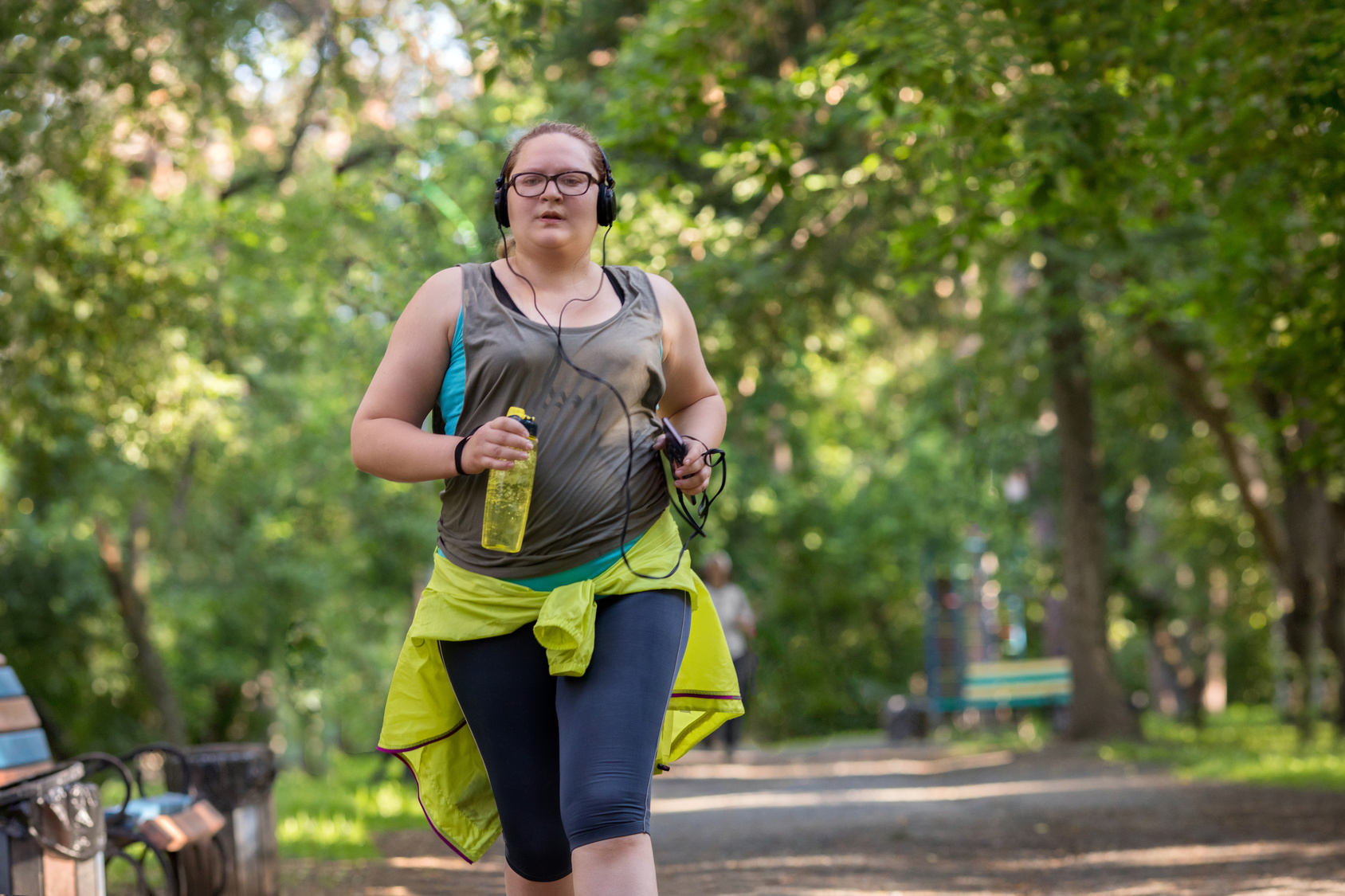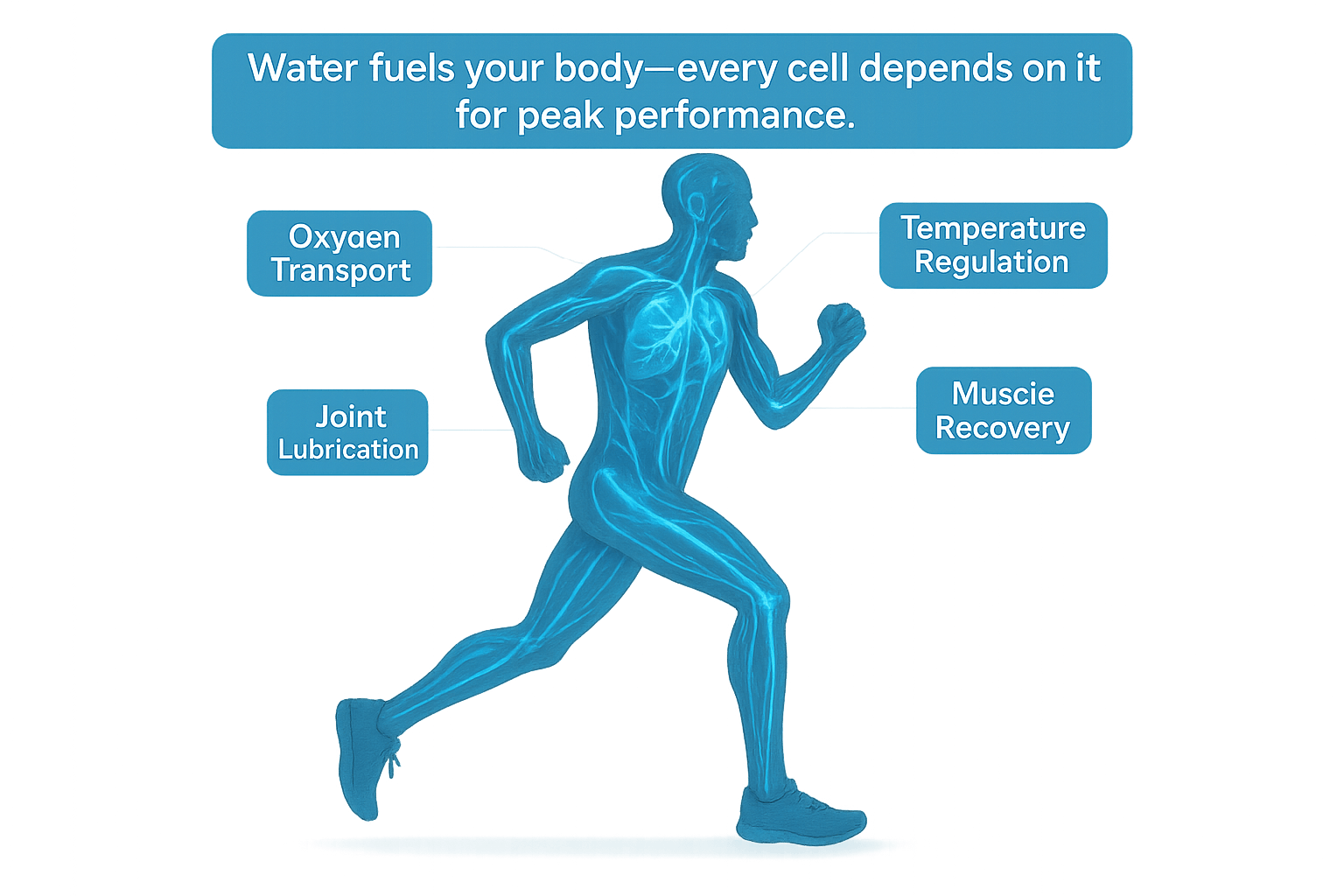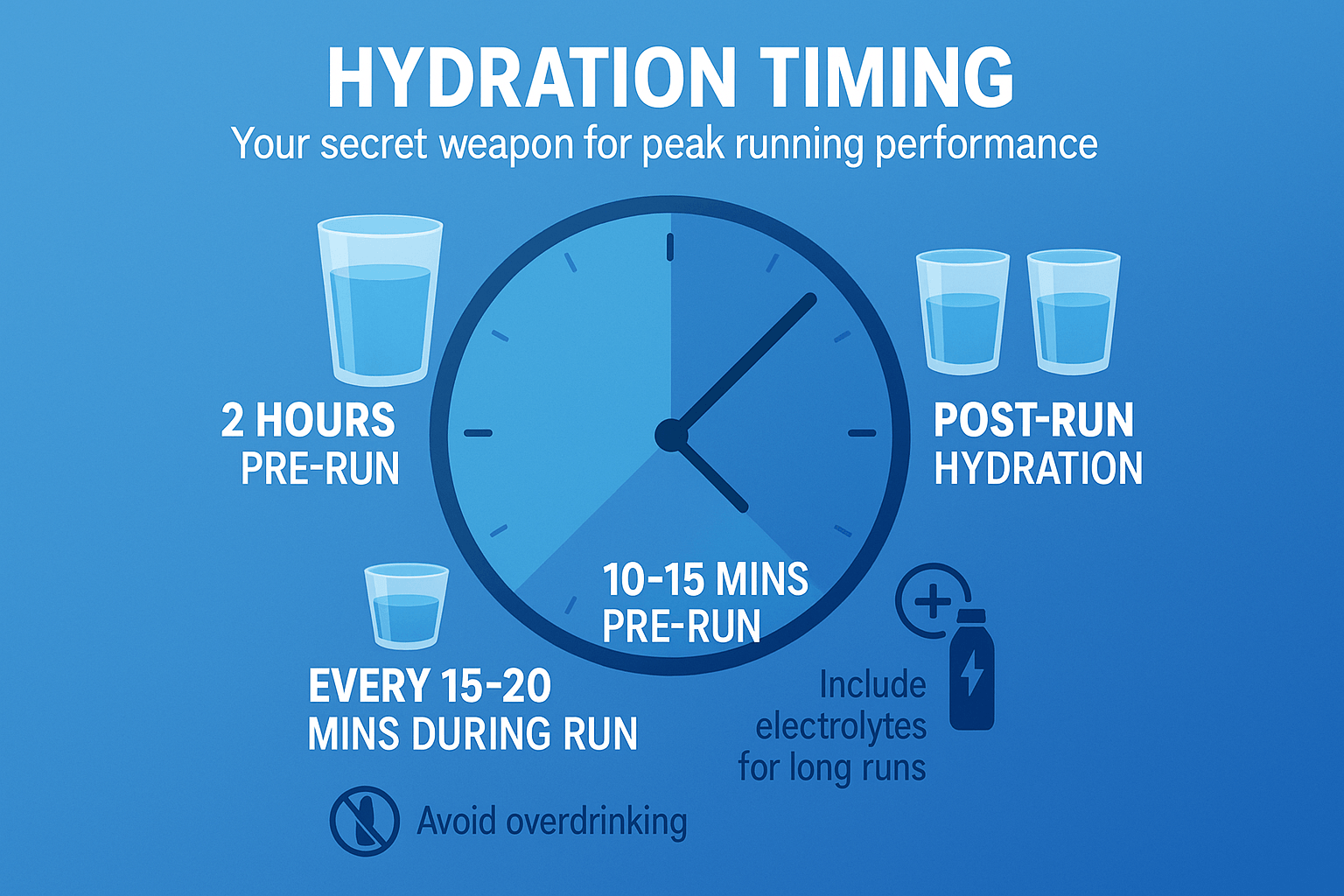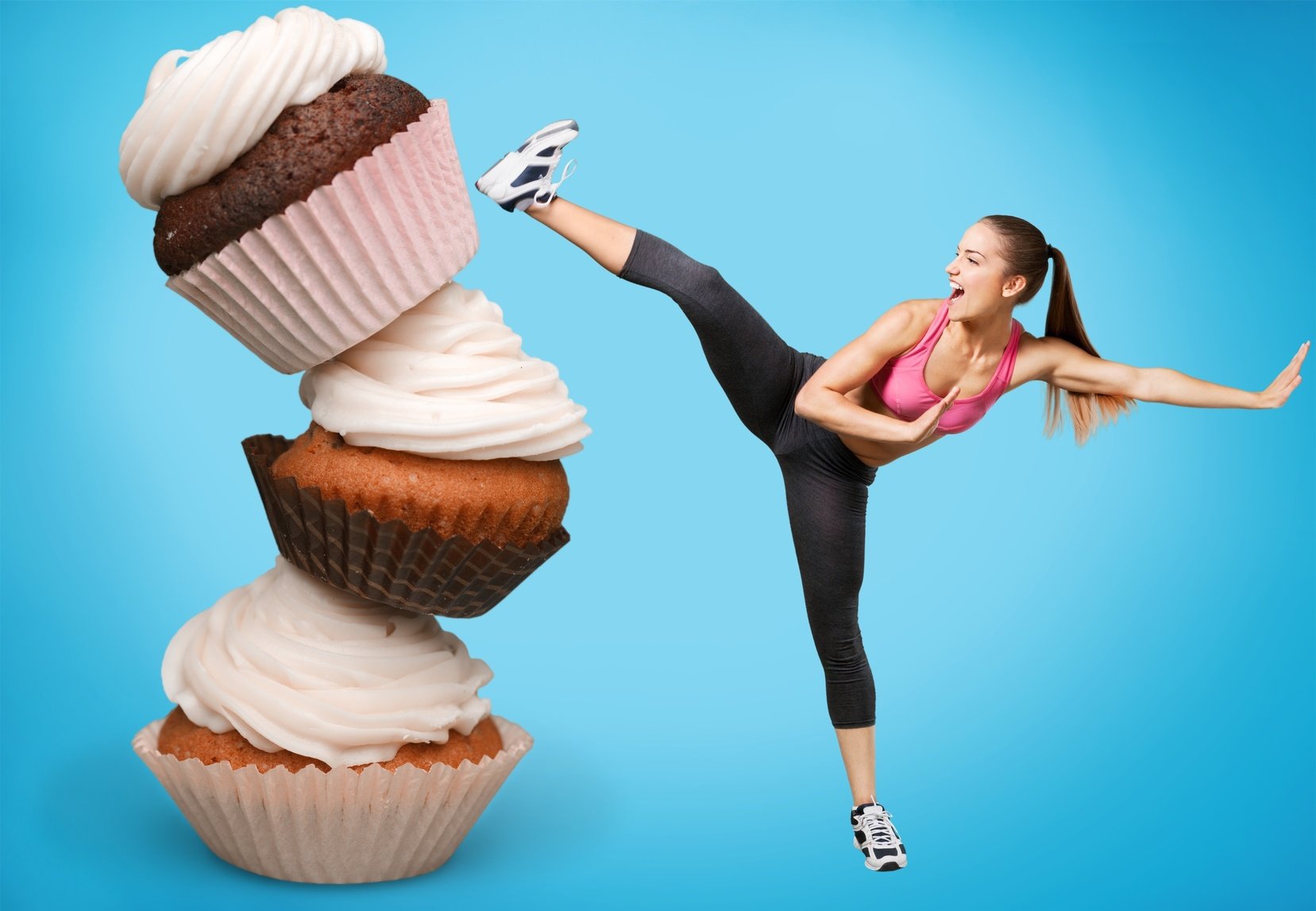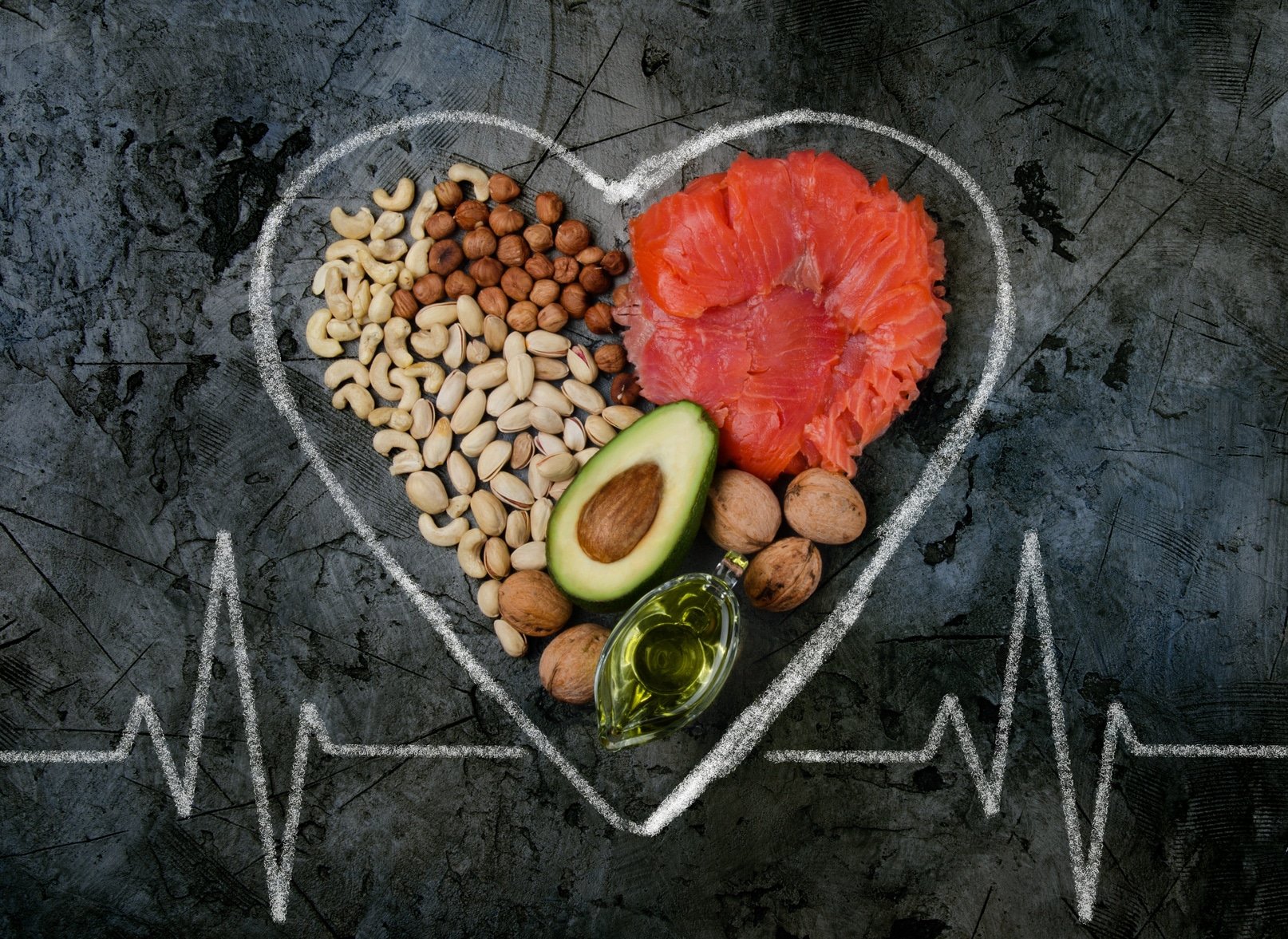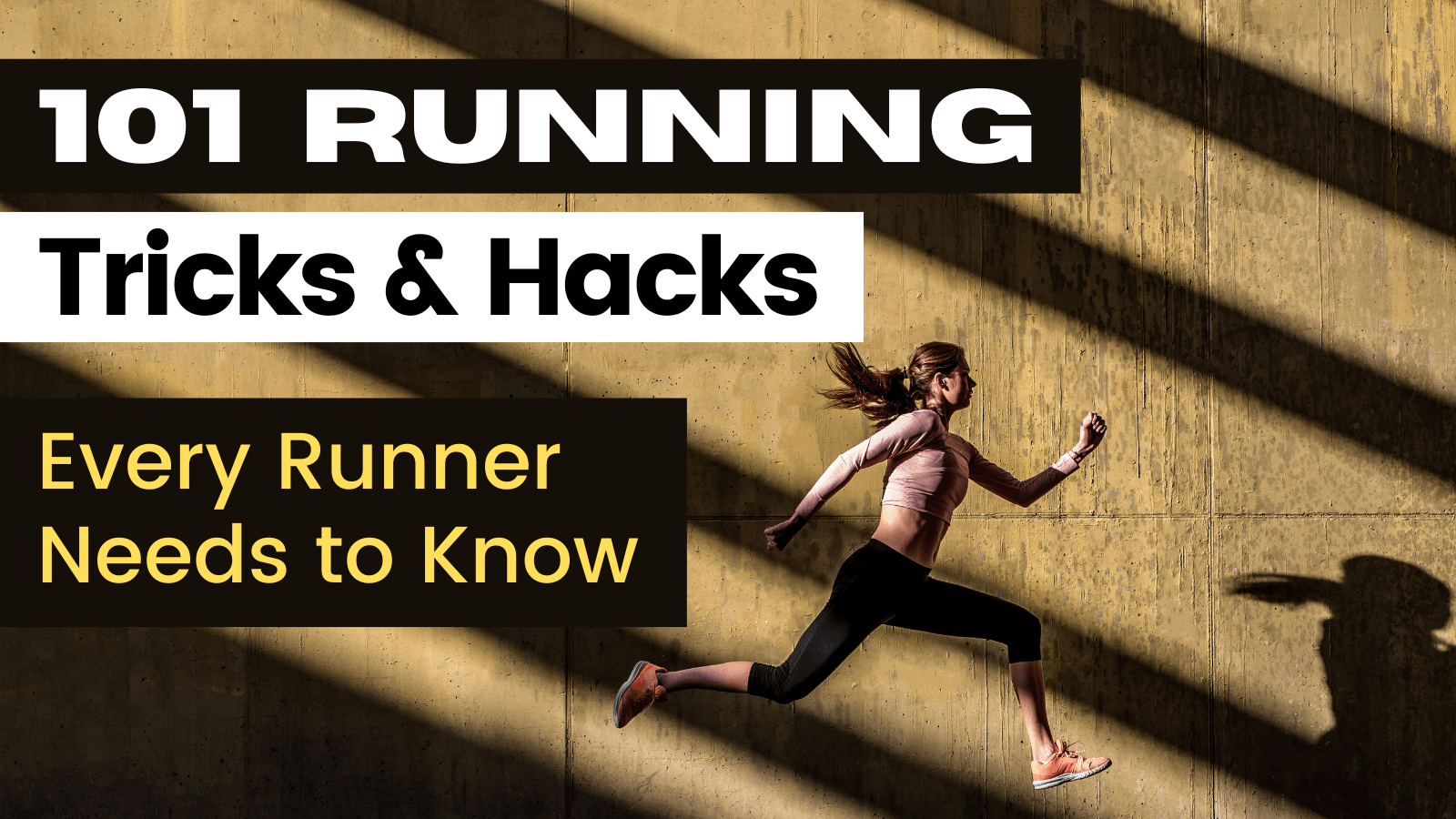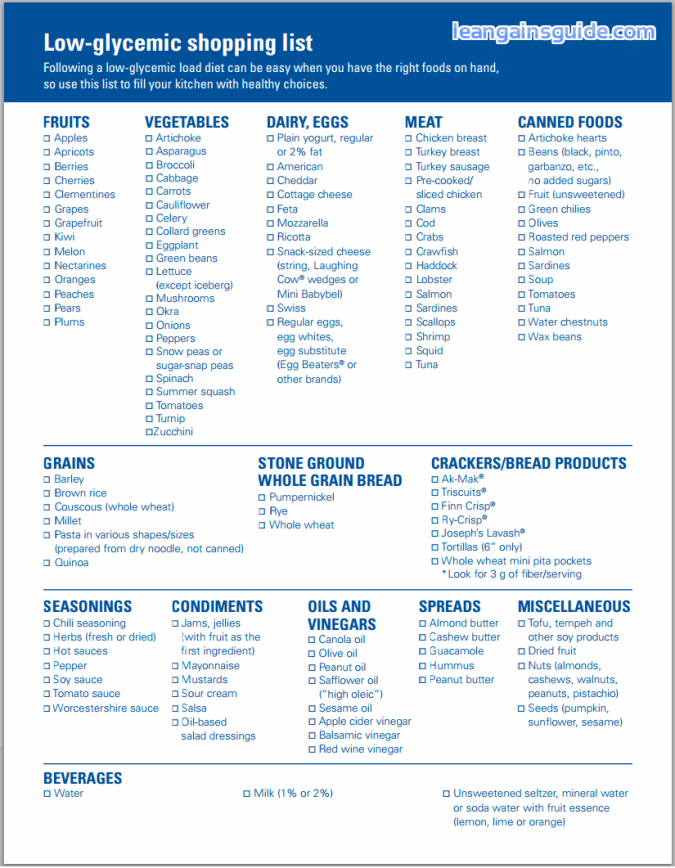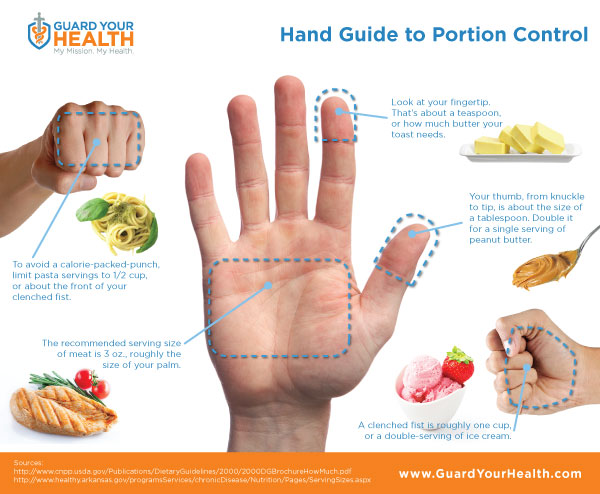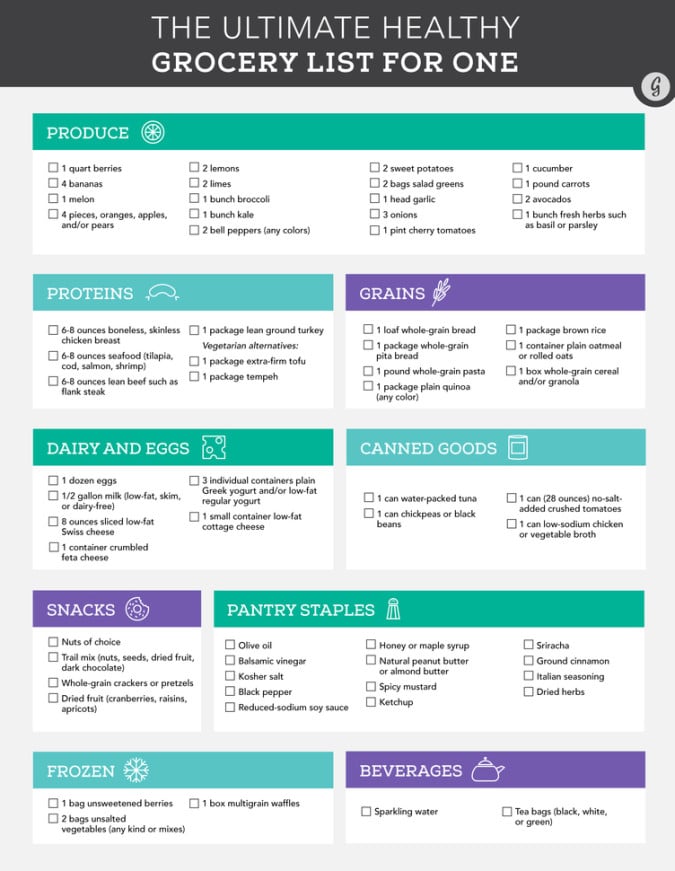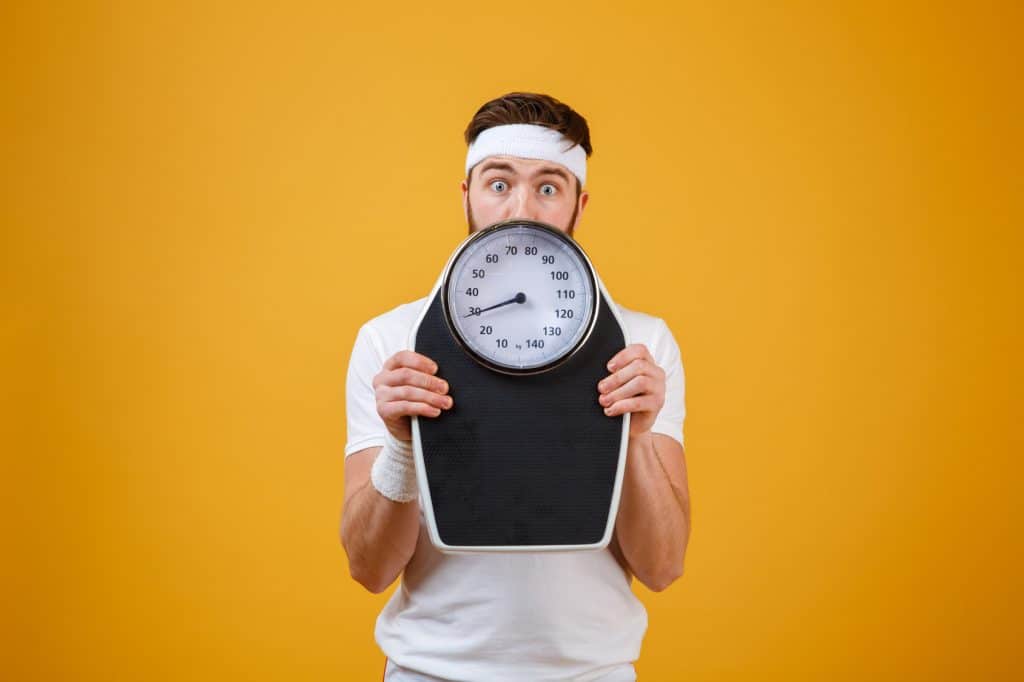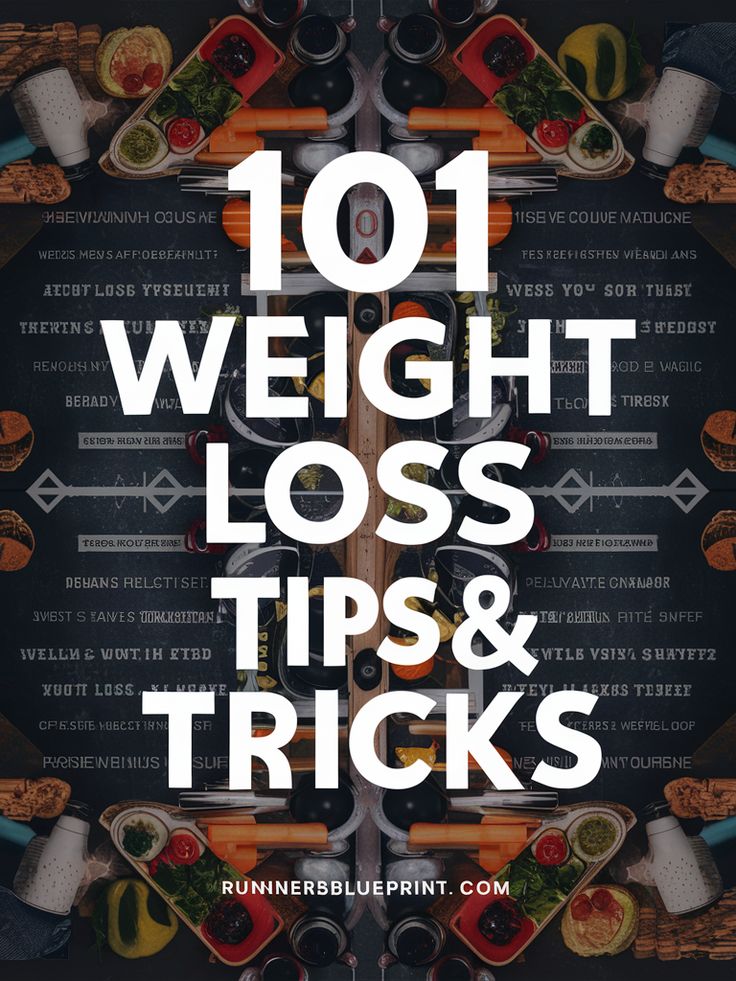If you’re serious about running faster, farther, and injury-free, you can’t treat nutrition like an afterthought.
Most runners obsess over mileage and splits — but many ignore the one thing that powers it all: fuel.
Here’s the hard truth: you can’t out-train bad nutrition.
You can nail every workout and follow the perfect plan, but if your body’s running on empty, you’ll never unlock your real potential. Food is what turns miles into fitness. It’s what rebuilds muscle, restocks glycogen, sharpens your focus, and keeps you healthy enough to train tomorrow.
This isn’t about trendy diets or cutting carbs. It’s about giving your body what it needs — every run, every workout, every race. The right fueling strategy doesn’t just make you feel better; it’s the difference between hitting the wall and powering through.
In this guide, you’ll learn exactly how to eat, drink, and recover like a runner. No guesswork. No fads. Just proven, real-world strategies backed by science — and tested on the road, track, and trail.
Table of Contents
- Why Nutrition is the Missing Piece Most Runners Skip
- Macronutrients for Runners: Carbs, Protein, and Fat
- Carbs: Your High-Octane Running Fuel
- Protein: Rebuild and Recover Stronger
- Healthy Fats: Hormones, Recovery, and Endurance
- Electrolytes: The Salty Secret to Stronger Runs
- Pre-Run Fueling Strategies
- Post-Run Recovery Nutrition
- Mid-Run Fueling: How to Avoid the Bonk
- Race Day Fueling: Practice, Plan, and Perform
Why Nutrition Is the Missing Piece Most Runners Skip
I hate to sound like a broken record but here’s the deal: You can’t outrun bad fueling.
You can log all the miles, crush the speed workouts, follow the perfect plan — but if you’re skimping on food, you’re basically trying to drive a race car on empty.
So let’s stop glorifying under-fueling and chasing some false “lighter is faster” mindset.
Truth is, fueling is faster.
The runners who eat right recover better, feel stronger, and show up on race day ready to roll.
Every hard run breaks your body down. Food — not just time — is what rebuilds it.
- Carbs restock glycogen so you don’t bonk.
- Protein repairs those micro-tears in your muscles.
- Micronutrients (think iron, B12, electrolytes) keep your system running clean.
Ignore nutrition, and it’ll catch up to you: sluggish runs, flat legs, mood swings, recurring injuries, or just feeling… blah.
So forget fad diets. Forget eating like a bird. This isn’t about starving to get faster — it’s about fueling like an athlete to train and recover like one.
Now let’s dive into the practical stuff.
Macronutrients for Runners:
Let’s break down the big three macros: Carbs. Protein. Fat. (And yes, electrolytes — but we’ll hit those later.)
Carbohydrates: Your High-Octane Running Fuel
Carbs aren’t optional for runners — they’re non-negotiable.
They’re your body’s #1 fuel source for running — especially when you pick up the pace or go long. Your muscles store carbs as glycogen, and once that tank runs low, you bonk. Hard.
That dead-leg feeling halfway through a long run? That crash during a tempo session? That’s usually a carb problem.
How much do you need?
- Aim for 5–12 grams of carbs per kg of body weight per day
- A 70kg runner = 350–700g/day, depending on training load
That’s a lot of carbs. And no, that’s not too much. It’s what your body burns when you train hard — especially at moderate to high intensity.
Everyday Carbs vs. Workout Carbs
Daily meals? Stick with slow-digesting, complex carbs:
- Oats
- Sweet potatoes
- Whole grain bread
- Brown rice
- Beans, lentils
- Fruits & veggies
These give you sustained energy and help with recovery.
Before or during workouts? You want quick, easy-to-digest carbs:
- Banana
- White bread with jam
- Sports gels or drinks
- Dates or dried fruit
- Rice cakes
Fast carbs = fast energy. No shame in that. It’s about fueling the run — not your Instagram.
Why Low-Carb + Running = Recipe for Disaster
Low-carb diets may work for desk jobs or light gym goers — but for runners? It’s like cutting the brakes and wondering why you can’t stop.
Studies show that runners on keto or low-carb plans may be able to jog slowly forever — but they can’t hit top gear. Their high-end performance tanks. Why? Because fat can’t fuel fast. Once you’re above 70% of your VO₂max, your body needs carbs to keep pace.
Want to run fast? Climb strong? Push hard in the final miles?
You need carbs. Lots of them.
Don’t get me wrong. I like low carb diet (especially when it comes to weight loss) and have run a marathon last year while on keto. But when it comes to performance, it’s the best diet.
Protein: Rebuild, Recover, and Run Stronger
Most runners obsess over carbs—and yeah, carbs are king for fuel. But protein? That’s your rebuild-and-repair crew.
Every footstrike causes tiny tears in muscle tissue. Protein is what patches those up—and makes you stronger.
It’s not just for bodybuilders. Runners need it to adapt, recover, and hang onto lean muscle.
It keeps your stride strong and your metabolism firing, especially if you’re training hard or trying to lose weight.
How Much Protein Do You Actually Need?
More than you think. The American College of Sports Medicine recommends 1.2–1.4 g/kg/day for endurance athletes—but newer research shows 1.6–2.0 g/kg/day (or ~0.7–0.9 g per pound of body weight) is even better.
Let’s break it down:
- If you weigh 132 lbs (60 kg), that’s 95–120+ grams of protein a day.
- Trying to lose fat while training? Go higher to protect your muscle.
Protein helps reduce soreness, repair damage, and build new mitochondria (your energy factories).
It also plays a huge role in keeping your immune system strong and your hunger in check.
What Does That Look Like in Real Life?
You don’t need to chug shakes or grill chicken five times a day. Just spread it out. Aim for:
- 20–30g per main meal
- 10–20g in snacks
That “protein drip” keeps your recovery rolling all day.
Sample Day:
- Breakfast: Greek yogurt + fruit (~20g)
- Lunch: Turkey sandwich or tofu bowl (~25g)
- Post-run: Chocolate milk or protein shake (~20g)
- Dinner: Quinoa + chicken or tempeh (~30g)
- Evening snack: Almonds, protein bar, or cottage cheese (~15g)
Easy. Not excessive. Just strategic.
Timing Matters—but Don’t Obsess
You don’t need to slam a shake 5 minutes after your run like a powerlifter. But yeah—getting protein within an hour or so post-run helps. Especially if it’s a tough session.
So what’s ideal? Pair protein + carbs after a run for max recovery:
- Chocolate milk
- Smoothie with fruit + protein powder
- Sandwich
- Yogurt with granola
The “30-minute anabolic window” isn’t a brick wall—it’s a suggestion. But don’t wait 3 hours, either.
Quality Counts
Your body runs on amino acids—some of which it can’t make on its own. So you need:
- Complete proteins: Meat, fish, eggs, dairy, soy.
- Combo sources: Beans + rice, lentils + grains, etc.
- Plant-based? You’re covered—you just need a little more planning and maybe a protein powder backup. Tempeh, seitan, tofu, quinoa, legumes—stack them smart and you’re golden.
The Hidden Power of Protein
Protein isn’t just about muscles:
- It fuels enzyme and hormone production
- Supports immune function
- Keeps you full and focused
- And if your carbs are low? Your body taps protein for energy (not ideal, but it happens)—better to eat it than have your body break down its own muscle for fuel
Training hard and not eating enough protein? You’re not just sore—you’re losing ground. Make it part of your plan, not an afterthought.
Fat: Long-Lasting Fuel and Vital Support
Fat’s had a bad rap in the past, but let’s clear that up—runners need fat.
You may not be burning it at race pace, but on long aerobic runs? It’s pulling weight.
Why Fat Matters:
- It’s your slow-burning fuel on long, easy efforts.
- It supports hormones like estrogen and testosterone (yes, even for men).
- It helps you absorb key vitamins—A, D, E, K.
- And it keeps you from feeling like a zombie between meals.
Even lean runners carry tens of thousands of calories in stored fat. When you train consistently, your body gets better at tapping into that. That’s how you spare glycogen for when you need to hit the gas.
Warning for Low-Fat Eaters
If you’re barely getting any fat—especially female runners—you could run into issues:
- Hormonal imbalances
- Menstrual disruption
- Mood swings
- Recovery problems
- Increased injury risk
Low fat = low hormone output = low performance over time.
Don’t fall into that trap.
Smart Fat Sources:
- Avocados
- Nuts & seeds
- Olive oil
- Fatty fish (salmon, sardines)
- Nut butters
- Whole eggs
You don’t need to go keto. Just include moderate healthy fats in your meals, and don’t fear them.
Why You Need Fat
- Omega-3s (found in salmon, sardines, walnuts, flax, chia seeds) are anti-inflammatory, support joint health, and may even improve oxygen delivery by making red blood cells more flexible. That means smoother blood flow = better performance.
- Most runners don’t get enough of these, so it’s smart to add fatty fish to your weekly meals or consider a fish oil or algae-based supplement if you’re plant-based.
How Much?
Rough guideline:
- 20–30% of your calories from fat
- That’s about 0.8–1.5 grams per kg of bodyweight per day for most runners
Easy Daily Sources:
- Olive oil on your salad
- Avocado on toast or in your wrap
- Nut butter in your oatmeal
- A small handful of almonds as a snack
Focus on unsaturated fats—olive oil, nuts, seeds, fish. A little saturated fat from meat or dairy is okay, but don’t let that be the bulk.
Just don’t load up on high-fat meals right before a run. Fat digests slowly and can cause stomach issues. Save the bacon cheeseburger for your post-run reward.
Electrolytes: The Salty Secret to Better Runs
Electrolytes don’t get enough attention—but if you’ve ever cramped up mid-run, bonked hard, or felt dizzy after a long sweat fest… you know they matter.
The Big Five:
- Sodium (most important for runners)
- Potassium
- Magnesium
- Calcium
- Chloride
These minerals run the show behind the scenes—regulating fluid balance, muscle contractions, nerve signals, and keeping your body cool under stress.
Sodium: Your MVP
You sweat it out in the highest amounts. And if you only replace water and ignore sodium? You risk hyponatremia—that’s low blood sodium. It’s rare, but when it hits, it hits hard (think confusion, weakness, even collapse).
You lose 500–1000 mg of sodium per hour when sweating hard. On hot days? Even more.
Rule of Thumb:
- Runs under 1 hour? You’re probably fine without extra electrolytes—just hydrate after.
- Runs over 1 hour (especially in heat)? Time to add salt:
- Sports drink
- Electrolyte tabs or capsules
- Salty snacks or gels
You don’t need to chug saltwater—but you do need to replace some of what you’re losing.
How Much?
Start with 300–600 mg of sodium per hour and adjust based on how salty you sweat (salt crust on your hat? You’re a heavy salt sweater). Some runners need up to 800+ mg/hr.
Pro tip: Don’t try to replace 100%. You’ll overload your stomach. Aim for 50–80% of what you’re losing.
Other Electrolytes:
- Potassium & Magnesium usually get replenished through food (fruit, veggies, nuts, whole grains).
- But if you’re doing multi-hour or back-to-back workouts, low magnesium can sneak up—contributing to cramps and lingering soreness.
A banana, handful of nuts, or leafy greens post-run usually has you covered.
During Training:
- Try different hydration options on your long runs—don’t wait for race day.
- Some runners do great with sports drinks. Others prefer salt caps and plain water.
- Experiment now, not mid-marathon.
Before Race Day:
Start 24–48 hours out. Add a little extra salt to meals.
- Soup, salted pretzels, soy sauce on rice = easy sodium loading.
- Pair with water to hold onto hydration better.
What to Eat Before Running (Without Messing Up Your Stomach)
Let’s be real—what you eat before a run can make or break it.
Eat the wrong thing, or eat too close to go-time? You’ll find yourself doubled over with cramps, or scouting every porta-potty in sight.
The goal isn’t to “load up” like it’s race day every time you run.
It’s to top off your tank without making your gut miserable. That means carbs your body can use, small portions, and smart timing.
Timing Is Everything
How much time do you have before your run? That changes the game.
Got 2–3 Hours?
You can go with a solid, balanced meal. Something like:
- Oatmeal with banana and peanut butter
- A turkey sandwich and fruit
- A bagel with jam and a boiled egg
This gives you carbs for fuel, a little protein to hold you over, and enough time to digest it all before you hit the pavement.
Got 60–90 Minutes?
Go smaller. Try:
- A slice or two of toast with peanut butter and honey
- A banana with a spoonful of almond butter
- Yogurt with a bit of granola
You want mostly carbs with a little fat or protein. Not too much. You’re fueling, not feasting.
Only 15–30 Minutes?
Keep it super simple and fast-digesting:
- Half a banana
- A few swigs of a sports drink
- A small rice cake with a dab of honey
- Half a granola bar (low fat/fiber)
Anything more and it’ll sit like a brick once you start moving. This is just enough to prevent a crash mid-run.
What to Eat: Keep It Simple, Keep It Light
Here’s what works for a lot of runners (and what’s worked for me):
- Toast with jam or banana – quick carbs, easy on the stomach
- Banana + nut butter – fast fuel plus a little staying power
- Oatmeal with honey (2+ hours pre-run only) – great base if you’ve got time
- Energy bar or half-bar – if you’ve tested it and it doesn’t wreck your gut
- Rice cake with honey or soy sauce – low fiber, quick energy
- Yogurt with fruit (low-fat) – works if dairy agrees with you
One rule of thumb: 75% carbs, 15% protein, 10% fat. That’s the rough balance your body will thank you for pre-run. Not a giant greasy meal. Not a high-fiber salad. Definitely not eggs and bacon 10 minutes before heading out.
What to Avoid
- Big meals too close to your run
- High-fat, high-protein, or high-fiber foods
- Spicy stuff (you’ll regret it)
- Anything totally new—don’t experiment on race morning
If you eat too much or too soon, you’ll feel heavy and slow. If you eat the wrong thing, you might end up making an emergency bathroom stop. You don’t want either.
Practice Makes Comfortable
Long run coming up? Race simulation? Test your food strategy. This is your chance to figure out what sits well, what gives you energy, and what makes you feel like you swallowed a dumbbell.
Everyone’s different. Some folks can run after a full breakfast. Others need a strict 2-hour digestion window or it’s game over.
Anything shorter than a 3-hour window after a heavy meal is a no-go for me.
I always tell runners: Use training to find your pre-run sweet spot. Figure out your “banana and toast” combo. Then on race day? Stick to the plan.
Golden rule: Nothing new on race day. That includes food.
What to Eat After Running: Refuel to Rebuild
Let’s be clear: the run isn’t over when you stop your watch. What you do next — especially what you eat next — is just as important.
Your body’s in recovery mode the second you finish. The tanks are low, the muscles are dinged up, and the repair process is ready to go — but only if you give it the fuel it needs.
Post-run nutrition = faster recovery, better training gains, and fewer days spent waddling around sore and stiff. Here’s how to do it right.
Timing: The 30–90 Minute Sweet Spot
You might’ve heard of the “30-minute anabolic window.” Yes, the sooner you refuel, the better. But don’t freak out if you don’t slam a shake immediately.
Just aim to eat something within the first 30–60 minutes, especially after long runs or hard efforts. After 90 minutes, your body’s still refueling — just not as efficiently.
Big mistake? Waiting 3–4 hours to eat after a run. That’s how you end up ravenous, under-recovered, and face-first in a bag of chips.
The Carb + Protein Combo (The Recovery Power Duo)
After a run, your body needs two things:
- Carbs – to refill muscle glycogen (your energy stores)
- Protein – to repair and rebuild muscle fibers
The magic ratio? About 3:1 or 4:1 carbs to protein, by grams.
For most runners, that’s about 50–70g carbs and 15–20g protein within an hour of finishing.
Real-World Recovery Food Ideas
Here’s what that looks like on a plate (or in a bottle):
- Chocolate milk (or soy version): 16 oz = ~50g carbs, 12g protein + hydration
- Smoothie: banana + berries + Greek yogurt or protein powder = ~60g carbs, 20g protein
- Greek yogurt parfait: granola + berries + drizzle of honey = ~40g carbs, 20g protein
- PB&J + milk: classic, effective, tasty
- Recovery bar + sports drink: for on-the-go fueling
- Oatmeal + eggs: great breakfast combo
- Rice or pasta + lean meat: post-evening run dinner fuel
Pro tip: If you’re queasy right after a run (common), sip something first — sports drink, chocolate milk — then eat solid food a bit later. Just don’t wait too long.
Don’t Forget Hydration (It’s Recovery Too)
Sweat a lot? You lost more than water — you lost salt too. So don’t just chug plain water.
A good rule of thumb:
- For every pound lost post-run, drink 16–24 oz of fluid
- Include sodium (sports drink, salty snack, or electrolyte tab)
Be careful with overhydrating on water alone — that can dilute your sodium levels (hyponatremia). That’s why a salty snack or electrolyte drink post-run is a smarter move than plain water alone.
Simple rule:
Drink until your pee is pale. Light yellow = hydrated. Dark = keep sipping.
Don’t Skip Recovery Calories (Even If You’re Trying to Lose Weight)
I get it — you just ran and want to “bank” those calories for later. But skipping your recovery meal is the worst move you can make if weight loss is part of the picture.
Why? Because:
- You’ll feel hungrier later (and probably overeat)
- You’ll slow down your recovery
- Your body might respond by holding onto fat or burning muscle
💥 Fueling after a run isn’t “undoing” your workout — it’s completing it. It tells your body,
“Hey, we’re safe. Now get stronger.”
Recovery Nutrition: It’s Not Over Until You Eat
Let’s get this straight — your run isn’t finished when you stop your watch. It’s done when you’ve refueled.
There’s this myth that recovery has to be some fancy shake or $40 supplement blend.
Total BS.
You don’t need a lab-made powder to recover well.
Real food works.
The magic formula? Carbs + protein + fluids. That’s it.
Shake Optional, Not Required
Sure, shakes are convenient. Easy to chug when you’re not in the mood to chew. But they’re not mandatory.
Example:
- Runner A: Has a whey protein shake and a banana
- Runner B: Eats a bowl of cereal with milk and berries
Both get the job done. Both rebuild muscles and restock glycogen. You don’t need to blow money on a branded “recovery matrix” — just have a plan and eat something decent soon after you run.
Timing Matters — But Don’t Panic Over Minutes
Yes, there’s a “recovery window.” No, it doesn’t slam shut at exactly 30:00 on the clock.
But the sooner you refuel, the better you’ll feel — later that day, tomorrow, and the next workout.
Ideal? Within 30–60 minutes. But if you’re not hungry, start with something small:
- Sports drink
- Banana
- Pretzels and a protein bar
Then eat a proper meal a bit later. That’s a solid one-two punch.
Skip the post-run meal altogether? That’s when you start paying the price — heavy legs, energy crash, sore muscles that won’t bounce back. Don’t do that to yourself.
Bottom line: Eat something. Don’t overthink it. Your body’s screaming for nutrients — listen to it.
Real-World Refueling Example (10-Mile Run)
You finish a long run. Here’s what good refueling looks like:
- Immediately: Bottle of sports drink (~30g carbs), handful of pretzels (~20g carbs + salt), protein bar (~15g protein, 25g carbs)
- An hour later: Rice bowl with chicken and veggies, plus fruit
That combo gives you carbs to replenish, protein to rebuild, fluids to rehydrate, and salt to help retain it all. That’s how you recover like a pro.
Delayed Refueling = Sluggish Recovery
You skip the snack. You wait until lunch. What happens?
- You feel drained all day.
- Your legs feel heavy tomorrow.
- Your next run feels like dragging a dead body.
Fix it: Prioritize post-run nutrition like you do your gear or your watch. It’s not a “bonus.” It’s the final mile of your training.
Fueling During Runs & Races: What to Eat, When to Eat, and Why It Matters
Let’s get one thing clear: fueling isn’t about being fancy—it’s about staying on your feet and finishing strong.
Whether it’s a long run or race day, your body’s burning through glycogen like firewood in winter. Wait too long to refuel, and you’ll feel it—the fade, the fog, the dreaded bonk.
So here’s how to fuel smart, without making it complicated.
What Counts as Fuel?
Whatever works for you—energy gels, chews, sports drinks, bananas, dates, even boiled potatoes with salt (ultra runners swear by ‘em).
The goal is simple: get carbs in, and make sure it’s easy to digest.
Modern gels and drinks often mix glucose + fructose so your gut can absorb more—up to 90g/hour if trained.
But don’t stress the math—any basic gel or sports drink works fine for most runners. Some go with candy or dried fruit—also fair game as long as it’s low fiber and sits well.
The key is: train with it before race day. Don’t surprise your gut mid-race.
Fueling by Run Duration & Race Type
Runs under 60 minutes
✅ Usually no fuel needed. You’ve got enough stored glycogen to cover it—unless it’s super intense or you skipped breakfast.
Then maybe sip a sports drink or pop a gel halfway. Otherwise, water’s plenty.
Runs 60–90 minutes
“It depends” zone.
- Easy 75-min jog? Probably fine with water.
- Hard 90-min tempo or long 15K race? Bring fuel.
Try 30g carbs—1 gel or a bottle of sports drink. Many half marathoners use 1–2 gels in races this long.
Long Runs (90+ minutes)
Now we’re talkin’. This is when fueling becomes essential. Start fueling after 45–60 minutes, then every 30–45 min after that.
Example for 2.5-hour long run:
- Gel at 45 min
- Another at 1:30
- Maybe one more at 2:15
Some runners prefer small sips of sports drink or half a gel every 20 min. Doesn’t matter how you break it up—just don’t wait till you feel wiped.
Use a watch timer if needed. Don’t rely on “feel”—by the time you feel it, it’s often too late.
Speed Work / Intervals
- Long sessions (2 hours or 3×2-mile workouts): Fuel like a long run.
- Shorter but intense sessions (~1 hour): No fuel needed mid-run if you ate well beforehand.
A splash of sports drink halfway or some caffeine pre-run can help for quality.
Fueling Won’t Fix Dumb Pacing (But Bad Fueling Will Break Smart Pacing)
You go out too fast, you’ll blow through glycogen before your body can replace it — even if you’re fueling well.
Pace and fuel should be partners. Even pacing = your gut can actually use the energy you’re giving it.
Suicide pace? You’re draining the tank faster than you can fill it. That’s a one-way ticket to the wall.
“Train Low, Race High” (For Advanced Runners)
Some experienced athletes dabble with “train low” sessions (fasted runs, low-carb workouts) to build fat-burning efficiency. That’s fine — if you use it carefully. Once a week, max. Easy runs only.
But race day = fuel up, don’t hold back. Even low-carb or keto ultra runners take in carbs during races. Why? Because they work.
Hydration for Runners: Don’t Just Drink — Drink Smart
Let’s cut to it: hydration can make or break your run. We’re not just talking comfort — we’re talking performance, recovery, and even safety.
You lose too much? You’re cooked.
You drink too much without salt? You’re also cooked — just a different flavor of disaster.
Here’s what you really need to know to stay sharp, steady, and out of the medical tent.
Why Hydration Matters
Even a 2% drop in body fluid can tank your pace, spike your heart rate, and leave you feeling like a foggy mess.
It’s like trying to run with the emergency brake on.
What happens:
- Blood volume drops → heart works harder
- Cooling gets worse → core temp spikes
- Focus fades → pacing mistakes, poor decisions
✅ Runners who stay on top of fluids run faster, finish stronger, and feel better after.
But here’s the twist: more isn’t always better.
Drink too much plain water? You risk hyponatremia — low sodium levels. It’s rare, but it happens, especially in slower long-distance events when folks overdo fluids and forget salt.
Symptoms? Same as dehydration — fatigue, confusion, nausea. But the fix isn’t more water — it’s electrolyte balance.
Moral of the story: Find the sweet spot. Don’t overdrink. Don’t underdrink. Drink smart.
Before the Run
You don’t need to guzzle a gallon right before you lace up.
Instead:
- In the 2 hours before: Sip ~16–24 oz steadily
- 10–20 minutes before: Top off with ~8–12 oz if needed
- Bonus: Add a little sodium — like a salty snack or an electrolyte drink
- Check your pee: Pale yellow = good. Too dark? Hydrate more. Crystal clear? Might be overdoing it.
Pro tip: Morning runner? Overnight pee is usually darker — that’s normal. Just sip a little water upon waking and you’re good.
During the Run
What you need depends on the day:
- Cool temps + short run? Maybe nothing.
- Hot day + long effort? You’ll need a plan.
Ballpark range: 14–27 oz (0.4–0.8 liters) per hour. Roughly 3–6 oz every 15–20 minutes
BUT — and this is big — don’t treat that like gospel. Listen to your thirst. Newer science says it’s actually one of the best tools we’ve got.
On shorter runs (<45–60 minutes): You might not need anything unless it’s scorching out.
On long runs: Have a way to drink. Carry a handheld, wear a vest, stash bottles, or loop by fountains. Aid stations are your friend — just don’t chug like it’s a frat party.
What to Drink
Water or sports drink? Depends how long you’re out there.
- <60–90 minutes: Water is probably fine
- 90+ minutes: Bring in the sports drink
A solid endurance drink includes:
- Sodium: ~200–500 mg per hour
- Carbs: 4–8% solution (that’s 20–60g per hour)
- Examples: Gatorade, Skratch, Tailwind, Nuun (with carbs), Maurten
Prefer water + gels? Fine. Just check your gels — do they have sodium? Some do, some don’t. If not, consider adding salt tabs or chews.
Don’t obsess over potassium or magnesium unless your doctor says to — normal diet covers those.
Electrolyte Balance: The Real MVP
Sodium is the big one. Lose too much and you’re cramping, bonking, or worse.
- Heavy sweaters? You need more.
- Light sweaters? You may get enough just by sipping sports drinks.
Cramping? It’s usually a mix of fatigue + low sodium + hydration. Rarely just potassium.
🧠 Drink to Thirst — But Have a Plan
Best practice? Use thirst as your primary cue. Don’t force it, but don’t ignore it.
Some days you’ll need more, some less. Plan hydration points for long runs or races, but don’t chug mindlessly at every water table.
Heavy sweater? Start sipping before you feel parched.
Light sweater on a cool day? Chill out — don’t drink just to check a box.
Different Weather, Different Tactics: How to Hydrate Like a Smart Runner
Let’s get something straight: hydration isn’t just a hot weather problem.
Sure, summer sweatfests get all the attention, but poor hydration can trip you up in any season—hot, cold, humid, or even at altitude. And yeah, dehydration sucks, but so does drinking too much water without salt. Both will wreck your run if you’re not paying attention.
So here’s how to handle hydration like a pro—before, during, and after your runs—no matter the forecast.
Hot Weather
Hot out? Your body’s working overtime to cool you down. That means higher sweat rate, faster fluid loss, and more need for sodium (since you’re sweating it out).
Your tactics:
- Drink more frequently, but pair it with electrolytes—don’t just guzzle plain water.
- Use cold drinks when you can. Pour water on your head or neck during races to help with cooling.
- Rule of thumb: for every 5°C (9°F) hotter than normal, bump fluid intake.
- Be smart: schedule walk breaks to drink if needed. Heatstroke is not a badge of honor.
Watch for signs like dizziness, chills, or a racing heart—those mean you’re falling behind.
Humid Weather
Humidity’s a sneaky beast. It slows sweat evaporation, which means you keep sweating—but it doesn’t cool you.
Your tactics:
- You’ll likely sweat a ton, even if you don’t feel it. Drink small sips regularly.
- Thirst may not kick in as strong—don’t wait for it. Have a plan.
- Watch your heart rate and energy—if they spike more than usual, dehydration could be the reason.
Cold Weather
Cold doesn’t mean safe. You can still dehydrate fast—it’s just sneakier.
Your tactics:
- Your thirst reflex drops (up to 40%), so you won’t feel thirsty even when you’re losing fluid.
- Cold makes you pee more (thanks, kidneys), which adds to the loss.
- Drink anyway—tea, warm water, or sports drink. It doesn’t have to be icy.
Just because it’s cold doesn’t mean you’re hydrated. Hydrate anyway.
Altitude
Higher up? Dryer air + lower pressure = more water loss through breathing and more frequent urination.
Your tactics:
- Drink consistently. You’ll need more than usual, even if you’re not sweating buckets.
- Appetite might drop—thirst usually goes up. Sip water and electrolyte drink alternately.
Know Thyself: Heavy Sweater or Camel?
Every runner’s different. Some of you drip sweat like a busted faucet. Others barely break a sweat and get by on minimal sips.
How to find out:
- Weigh yourself pre- and post-run. If you’re down more than 2–3% body weight? You probably under-drank.
- Crusty with salt? Swollen fingers? Feeling lightheaded? That’s a hydration or electrolyte mismatch.
Calibrate your intake through trial and error.
Before / During / After: Your Checklist
Before the Run
- Drink ~500–600 ml (~17–20 oz) of water or sports drink in the 2 hours before.
- Optionally sip another 250 ml (~8 oz) in the last 15–30 minutes.
- Don’t overdrink. Include a little salt or electrolyte if it’s a long run day.
- Check your pee: light yellow = good to go.
During the Run
- For runs >1 hour, start sipping every 15–20 min.
- Aim for 0.4–0.8 L/hour (~13–27 oz) as a baseline.
- In practice: ~100–200 ml (3–7 oz) every 15 min works well.
- Include sodium: either via sports drink, salt tabs, or a salty snack.
- Don’t force it. Drink to thirst, especially if you’ve trained that way.
After the Run
- Replace ~125–150% of what you lost in sweat.
- Lost 1kg (2.2 lbs)? Drink 1.25–1.5 liters (~42–50 oz) over a few hours.
Signs of dehydration:
- Dry mouth
- Headache
- Sluggish pace
- Spiked HR
- Dark pee
- Dizziness
Signs of overhydration (hyponatremia):
- Nausea
- Confusion
- Bloating
- Swelling in fingers/feet
- Very clear urine (but you feel off)
💡 Balance, not volume, is the goal. Drink enough—but not too much—and include salt if you’re sweating a lot.
Runners and Fat Loss: How to Cut Weight Without Wrecking Your Running
Let’s get honest. A lot of runners think, “If I could just lose 5–10 pounds, I’d be faster.” And yeah — carrying less non-functional weight can help your running economy.
But here’s the trap: chasing weight loss the wrong way can blow up your season faster than a rolled ankle.
Starving yourself? Crash dieting? Slashing calories just because the scale isn’t moving? That stuff kills performance, torpedoes recovery, and opens the door to injuries and burnout.
So if you want to lean out the right way — run better, not just lighter — here’s the smart approach.
Performance First — Not Just Aesthetics
Before you mess with your intake, ask yourself: Why do I want to lose weight?
If the answer is “to get faster and feel stronger on the run,” good.
If the answer is “to look better in a mirror,” pause.
Chasing scale numbers for aesthetic reasons leads runners down dark roads — skipping meals, undereating, obsessing over calories. You might lose a few pounds… but along with it, you lose speed, energy, and joy.
One study showed marathoners who restricted calories to lose weight actually performed worse and had higher injury rates.
“Lighter is not automatically faster — if it costs you strength or fuel.”
Sometimes your true racing weight is 5–10 pounds heavier than your “photo weight” — and that’s okay. You run better when you’re fueled, not flat.
Create a Small Deficit — Not a Starvation Plan
If you’re going to cut weight, do it gradually.
- Safe target: 200–500 calories/day below maintenance
- Expected rate: 0.25–0.5 kg (0.5–1 lb) per week
That might sound slow, but it’s sustainable. It lets you keep training, hold onto muscle, and stay mentally sharp. You’re not trying to win The Biggest Loser — you’re trying to run strong.
Experts recommend dropping no more than 0.5% of your bodyweight per week.
So for a 150 lb runner, that’s about 0.4–0.75 lbs/week.
That’s the sweet spot where your body trims fat without freaking out.
RED-S: When Running on Empty Backfires
Underfueling isn’t just unhelpful — it’s dangerous. RED-S (Relative Energy Deficiency in Sport) is real, and it wrecks runners.
Symptoms include:
- Fatigue
- Poor recovery
- Missed periods or low testosterone
- Bone stress injuries
- Slowed metabolism
- Irritability and brain fog
Basically, if you under-eat long enough, your body starts shutting down stuff it thinks you don’t “need.”
You might lose a few pounds fast… but then plateau, get slower, and wonder why your workouts suck.
Here’s the truth:
A well-fueled runner who’s a few pounds heavier will always outrun a lighter, under-fueled one.
Eat Protein, Lift Stuff — Keep Your Muscle
Fat loss is only good if you hold onto muscle. Otherwise, you’re just getting smaller — not stronger.
To protect your lean mass:
- Protein: Aim for ~1.8–2.0g/kg of body weight
(Roughly 25–30% of total daily calories)- Every meal should have 25+g of protein
- Snacks? 10g+ minimum
- Strength Training: Don’t stop lifting just because you’re dieting
- Bodyweight strength, core, or weights 2–3x/week
- It tells your body: “Hey, this muscle is still needed — don’t burn it for fuel.”
Some runners think, “I’m not bulking, so why lift?” Because lifting preserves the muscle you’ve built — especially during a calorie deficit.
More muscle = better running economy.
More strength = more power at every stride.
Time Your Cut — Not During Peak Season
Trying to cut weight in the middle of race prep? That’s a rookie move.
The best time to focus on fat loss is:
- Base phase or early training
- Lower intensity = better chance to recover while eating slightly less
- Once you’re 6–8 weeks out from a race? Stop cutting and start fueling
Trying to PR while under-eating? That’s how people get hurt or underperform.
Finish your cut early, stabilize your weight, and then eat to perform. Think of food as fuel for your peak workouts — not the enemy.
Fuel the Training — Don’t Starve It
If your workouts start to suck… if you’re dragging through intervals… if your motivation crashes…
That’s not “mental weakness” — that’s your body asking for fuel.
A smarter approach:
- Eat more on hard days, maybe slightly less on easy days
- Don’t try to run fasted all the time
- Don’t skip carbs — they’re your rocket fuel
You can’t get faster if you’re always running on fumes.
Quality Over Calories – Make Every Bite Count
If you’re in a fat-loss phase or eating at a small deficit, you can’t afford to waste calories on junk.
That doesn’t mean you cut all the joy out of your food—but it does mean your meals need to work for you. Here’s how:
- Prioritize whole foods – lean protein, fruits, veggies, whole grains, healthy fats.
- Cut back gently – smaller portions of carb-dense foods (ex: 1.5 cups rice instead of 2), and add more veg to stay full.
- Dial protein up – aim for about 30% of your calories from protein to hold on to muscle and feel full longer.
Don’t go ultra low-carb. Don’t go fat-free. That’s not how runners operate.
- Fat = hormones. Drop it too low and you risk tanking your libido, messing with your cycle, or feeling chronically wrecked.
- Carbs = fuel. Even during a cut, you need enough to power your runs. Spread carbs around your training sessions and ease back slightly on rest days—not all the time.
Rule of thumb: You should still be eating enough to train strong.
Red Flags: Signs You’re Underfueling
You can’t run strong if you’re starving your body. Period.
Watch for these warning signs:
- Always cold
- Poor sleep or insomnia
- Mood swings or depression
- Low libido (men) or missing periods (women)
- Frequent injuries or illness
- Performance falling off a cliff
These are signs you’ve gone too far. Don’t ignore them. Back off the deficit and focus on recovery. Your long-term progress matters more than fast fat loss.
One thing I always tell my athletes:
“The scale can lie. Your workouts don’t.”
If training starts to feel worse and worse while weight drops, something’s off.
Recovery Still Matters During a Cut
Cutting calories doesn’t mean cutting corners.
- Post-run fuel is still non-negotiable. After key sessions, get in protein + carbs ASAP. You can make the deficit happen later in the day.
- Don’t go to bed starving. A small protein snack before sleep can help you recover better and sleep deeper.
Recovery is training. It’s when you actually get fitter. Cutting too hard sabotages that.
Be Patient – Real Progress Takes Time
Got 10+ lbs to lose? Don’t try to do it all in one cycle. Split it up:
- Lose 5–6 lbs during base training
- Maintain during race season
- Another cut during the next off-season
Trying to diet all year long? Recipe for burnout.
Also, the leaner you get, the slower the fat loss. That’s normal. You’re not broken—you just need to stay consistent and adjust expectations.
The Holy Grail: Leaner & Faster
Can you lose fat and PR in the same season? Yes—if you do it right.
Here’s what works:
- Drop ~300 calories/day (modest deficit)
- Keep protein high
- Time carbs around training
- Don’t compromise sleep or post-run fuel
- Stay consistent
Over 2–3 months, you might lose 5% of your body weight without trashing your workouts. That’s the dream.
But try to force it? Slash calories too hard? You’ll lose weight and fitness—and probably end up injured or fried by race day.
Carb Loading: Do It Right, Don’t Overdo It
You’ve trained smart. You’re tapering. Now let’s fuel the tank.
Carb loading isn’t about stuffing your face the night before the race—it’s about strategically filling your muscles with glycogen so you have fuel to burn over 26.2 miles (or more).
Done right, it can boost performance by 2–3%. That’s 5–10 minutes in a marathon. Totally worth it.
When to Start?
Start 2 days out from race day. If your race is Sunday, ramp up carbs Friday and Saturday. Some runners go for 3 days (Thursday through Saturday), which works if you prefer more moderate volumes over more time.
Minimum: 48 hours
Too early (5+ days out)? Not helpful—can lead to weight gain that doesn’t fuel you
Too late (just Saturday dinner)? Doesn’t give your body time to fully top off
The sweet spot? Start loading by Thursday night and be mostly done by Saturday afternoon.
It’s About Carb Percentage, Not Just Calories
You don’t need to eat 5,000 calories a day. But you do need to shift your plate toward more carbs, less fat/fiber/protein.
- Target: 8–10 grams of carbs per kg of body weight (e.g., 500–600g/day for a 140 lb runner)
- Keep meals lower in fat and fiber—you’re not trying to set PRs in digestion
- Carb loading + water = weight gain (1–3 pounds is normal)
👉 That’s glycogen + water stored in your muscles. It’s a good thing.
You’re not gaining fat—you’re gaining race fuel.
Don’t Make These Mistakes
1. Stuffing yourself at one dinner
One pasta meal won’t do it. The night-before meal should actually be normal-sized, not a gut bomb. Your last big carb meal should be lunch the day before.
2. High-fiber “healthy” carbs
Good for everyday. Bad before racing. Skip the beans, kale, brown rice, whole-wheat everything. Go with white rice, white bread, peeled potatoes, low-fiber cereals, bananas, juice. You want fuel that digests clean.
3. Forgetting sodium & hydration
Glycogen needs water to store—about 3g of water per gram of carb.
That means:
- Sip water throughout the day (don’t chug gallons)
- Include some electrolytes (sports drinks, broth, pretzels)
- Salt your food more than usual
Sample 2-Day Load (140 lb / 63.5 kg Runner)
Day 1 (Friday) – moderate taper day
- Breakfast: Oatmeal + banana + honey + OJ (~125g)
- Snack: Bagel + jam (~50g)
- Lunch: Turkey sandwich on white bread + pretzels + apple + sports drink (~90g)
- Snack: Granola bar + grapes (~40g)
- Dinner: Big plate of pasta + marinara + lean chicken + carrots (~130g)
- Dessert: Fig bars or sorbet (~40g)
✅ Estimated: ~500g carbs
Day 2 (Saturday – Race Eve) – mostly rest, heavy carb focus
- Breakfast: Pancakes + syrup + Greek yogurt (~95g)
- Snack: Sports drink + crackers (~40g)
- Lunch: Baked potato + cottage cheese or tuna + rolls + applesauce (~120g)
- Snack: Rice Chex + almond milk + banana (~75g)
- Dinner (early): White rice + tofu or lean fish + zucchini + roll (~110g)
- Evening (light): Half bagel with honey or Cheerios (~25g)
✅ Estimated: ~520–580g carbs
Race Morning
Don’t skip breakfast. Aim for 1–1.5g/kg of carbs ~2–3 hours before go time. That’s about 80–100g for this runner.
Example:
- Bagel with peanut butter + banana + sports drink
- OR oatmeal with fruit + small glass of juice
Carb Loading: It’s Real, But Only If You Do It Right
Let’s cut to it: carb-loading works—if you do it correctly.
Done right, it can push back the wall by miles. Done wrong, it’s just bloating without the benefit.
What Carb-Loading Actually Looks Like:
If you’re prepping for a race that’s 90+ minutes (like a marathon, hard half marathon, ultra, or triathlon), carb-loading gives you a legit edge. You’re topping off muscle glycogen—your main fuel tank for endurance efforts.
Expect to feel a little “heavy” during taper. That’s normal. You might be up 1–4 pounds, feel tighter in the legs, even look slightly more jacked. That’s just extra water stored with glycogen—and it’s fuel in the bank. Come race day, you’ll burn through it.
One study showed runners went ~20% longer before fatiguing after proper loading. Another saw a 2–3% improvement in race performance. That’s minutes off your marathon time—for free.
How to Load Right (Not Just Eat More Pasta):
- Duration: 2–3 days before your race
- Carbs: 8–12 grams of carbs per kilo of body weight (yes, it’s a lot)
- Keep fat/fiber low: You want clean-burning fuel, not gut bombs
- Hydration: Stay on top of fluids—carbs pull water into muscles
- Cut the feast the night before: Big meals late = bad sleep and heavy stomach. Finish carb-loading by early afternoon the day before.
Think bagels, white rice, toast, potatoes, cereal, sports drinks. Snack all day, don’t binge all at once.
And remember: carb-loading isn’t weight gain—it’s race fuel.
If you’ve trained for months, don’t shortchange yourself now because you’re afraid of feeling “puffy.” That little weight increase? It’s part of the plan.
Race Day Nutrition: What to Eat Based on Distance
General Rule: No Surprises
Race day is not the time to try something new. That new gel from the expo? Save it for a test run next weekend. Today is for execution, not experimentation.
5K & 10K Strategy
Short races, but they still need the right fuel window to feel good and go fast.
Pre-Race:
- No mid-run fuel needed. Focus on showing up topped off.
- Night before: Regular high-carb dinner (pasta, rice, potatoes). Nothing special—just don’t skip the carbs.
- Morning of: Eat what’s worked in training. If you’ve got 2–3 hours, go with toast, a banana, small bowl of oats, or a light energy bar. Only 30–60 minutes? Try a half banana, a rice cake, or a few swigs of a sports drink.
- Hydrate well leading into the race, but don’t chug water right before.
During Race:
- You probably won’t need anything.
- Maybe a sip of water in a 10K if it’s hot or you’re out there over an hour, but many runners don’t drink at all during a 5K.
Optional Boost: Caffeine Preload
- Big performance kicker, even for short races.
- 2–3 mg/kg 45–60 minutes pre-race is a common sweet spot (that’s ~150–200mg for a 150 lb runner).
- You can use coffee, caffeine pills, or a caffeinated gel. Just don’t try it for the first time on race day.
- Caffeine has been shown to shave 2–4% off your time, even in 5K/10K efforts. That’s a full minute in a 40-min 10K. No joke.
If you’re caffeine sensitive, start lower (like 100mg) and test in training.
Gut Management for Short Races
GI issues at this distance usually come from bad timing or nerves, not fueling mistakes mid-run.
- Eat at least 60–90 minutes before the race if possible.
- Avoid high fiber or greasy meals the night before (no spicy takeout, giant salad, or mystery bar from the expo).
- Stick with plain, simple, tested food: toast, banana, cereal, maybe a little PB or honey if that works for you.
- Wake up early enough to “take care of business” before the race. Some runners swear by a little coffee to help that along. Just don’t overdo it if you’re not used to it.
Don’t Do This:
- Eat a giant bacon-and-eggs breakfast 20 minutes before your 5K.
- Slam a random gel mid-10K when you’ve never used it before.
- Skip breakfast entirely and wonder why you bonked at mile 4.
- Pop caffeine pills without testing the dose first.
Fueling for a Half Marathon: How to Run Strong from Start to Mile 13.1
The half marathon isn’t just “half a marathon” — it’s a beast of its own. Long enough that fueling matters, short enough that pacing and gut strategy still make or break your race.
Here’s how to handle the food, fluids, and caffeine so you don’t bonk at mile 10 or wrestle your guts into the port-a-potty mid-run.
Pre-Race Fueling: Top Off the Tank (Without Overdoing It)
For most runners, a half takes 1.5 to 3 hours. That’s long enough that glycogen stores matter. So yes, carbs matter too — but no need for a 3-day pasta binge.
Day Before:
- Lightly carb-load: ~7–8g of carbs per kg of bodyweight is solid. That means more rice, potatoes, pasta—but keep fiber and fat low, especially at dinner. No giant salads or greasy Alfredo.
Race Morning:
- Eat 2–3 hours before go time. Something like:
- Oatmeal + banana
- Toast with honey + PB + fruit
- Bagel + jam + a little protein if your stomach handles it
- Aim for 75–100g carbs, 300–500 calories
- Drink 16 oz fluids with electrolytes between 2–1 hour pre-race
- Finish anything heavy 1 hour out, then sip 5–10 oz of sports drink or water in the final hour
Pro tip: Avoid experimenting here. Eat what you’ve practiced with on long runs.
Mid-Race Fueling: Yes, You Need It
If you’re running over 90 minutes (and most people are), you need carbs mid-race. It’s that simple.
The goal:
- 30–60g of carbs total during the race
- That could be:
- 1–2 gels
- Sips of sports drink
- Or both
Sample Gel Strategy:
- Gel #1: ~45 minutes in (mile 5–6)
- Gel #2: ~1h30 in (mile 10)
Take with water, not sports drink, to keep your gut happy.
If you’re finishing in 1.5 hours or less? You might just need one gel around the 45-minute mark.
If you’re going closer to 2+ hours? Two to three gels, spaced 40–45 minutes apart, will keep your energy up and delay the crash.
Caffeine: Handle With Care (But Use It Smart)
Caffeine works. It can make mile 11 suck less. But don’t go wild if you haven’t practiced.
Strategy:
- Take 100–200mg of caffeine about 30–45 minutes before the start (coffee, energy gel, tablet)
- Optional: top off with a caffeinated gel around mile 8–10 (~30–50mg)
Don’t double your usual coffee dose on race morning. That’s a fast track to port-a-potty town. Practice this combo during long runs first.
Hydration During the Race: Sip Smart
Hydration’s personal. Here’s a guide:
- Cool weather? 8–12 oz total might be plenty
- Warm or humid? Hit every other aid station, aim for 4 oz each time (~20–30 oz total)
- Don’t overdo water. Some sports drink = good (you lose salt in sweat)
- If you’re drinking gels, use water not sports drink with them
The golden rule: Drink to thirst, not on a fixed schedule.
Sample Race-Day Fuel Plan (2-Hour Half)
- 5:30 AM (2 hrs before): Toast + honey + banana (~80g carbs), coffee (~100mg caffeine), sip 8–12 oz sports drink
- 7:15 AM (15 min before gun): Final sip of water (~4 oz), maybe a chew or half-gel (~25mg caffeine, 10g carbs)
- During the race:
- Gel #1 at ~45 min (mile 5–6)
- Gel #2 at ~1h30 (mile 10)
- Sip sports drink at aid stations (mile 3, 8), water at others as needed
That gives you:
- 70–80g carbs total
- ~105mg caffeine
- Enough fluid and sodium to stay strong
Marathon Fueling: Eat Smart, Run Strong
When it comes to the marathon, fueling can make or break you.
You can have the perfect pacing, perfect training, and still crash and burn if you blow the nutrition plan.
So let’s walk through it — what to eat, when, and how to avoid bonking at mile 20.
The Day Before: Carb-Load Like a Pro (Not Like a Fool)
Here’s the move: Friday and Saturday (for a Sunday race) = carb city. We’re talking 8–10g of carbs per kilogram of body weight. Don’t get lost in the math — just know that means lots of rice, pasta, bagels, oats, bananas, sports drinks, etc. Keep fiber low and fat low. Don’t gorge at 9 p.m. — eat a solid dinner early enough that you’re not stuffed at bedtime.
And hydrate. Sip fluids through the day. Maybe add a little extra salt (unless you’re on a restriction) to help hold water.
Race Morning: Early, Easy, and Familiar
Eat breakfast 3–4 hours before the start. That might mean 5 a.m. if your race is at 9. Sorry, but trust me — it’s worth it.
- Aim for 1–4g/kg carbs. For most, that’s 75–100g.
- Easy combos: bagel + jam + banana. Oatmeal + honey + raisins. Pancakes + syrup.
- Include a little protein (like an egg or milk) if you like, but keep fat low.
- Drink ~16–20 oz of fluid with breakfast, then ease up and sip smaller amounts closer to the gun.
Optional but effective: A gel ~15 minutes before the start with a few ounces of water. It gives you a hit of carbs (and caffeine if desired) right before go time.
During the Race: Don’t Just Survive — Fuel to Thrive
Here’s the golden rule: 30–60g of carbs per hour. If you’re aiming for a 4-hour finish, that’s at least 120–240g of carbs total.
How to hit that?
- Gels: One every 30–45 minutes. Most are ~25g of carbs each. That’s 4–5 gels minimum. Take them at Mile 5, 10, 15, 20, maybe 23–24 for the final push.
- Sports Drink: Add it at aid stations. Those little cups are maybe 3–4 oz, with 6–8g of carbs. Hit a few cups per hour, and it adds up.
- Combo: Gels + sports drink = best bet. Just make sure you’ve practiced it in training.
Can’t handle a ton of gels? Try chews, carb-rich sports drink, or other options — but practice is key. Don’t just wing it on race day.
Electrolytes: Don’t Forget the Salt
If it’s warm or you’re a heavy sweater, you’ll need sodium too.
- Gels = ~50–100mg sodium
- Sports drinks = ~100mg per cup
- If it’s hot? Maybe a salt tab halfway through (~200–300mg sodium), but don’t overdo it.
Sweaty shirt with salt crusts after long runs? That’s your clue — you might need more electrolytes.
Caffeine: Use It Smart
Caffeine can give you that mental boost, especially late in the race.
- Race day plan: Coffee with breakfast (~100mg), then a caffeinated gel mid-race (~50mg), maybe another around mile 20.
- Keep total intake around 200–300mg max to avoid GI issues or jitters.
Example Plan (for a 3:45 marathoner)
Pre-race:
- Carb-load 2 days before
- 3 hours pre-race: Bagel + PB + banana + sports drink = ~100g carbs
- Small coffee (~100mg caffeine)
Start line:
- 15 min before: 1 gel (20g carbs, 50mg caffeine) + a few sips of water
During race:
- 5 gels: Take at 45, 90, 135, 180 minutes (and maybe 210 if needed)
- Sports drink: At most aid stations (~every 2–3 miles), drink ~4 oz each = ~70g carbs total
- Electrolytes: Gels + drink = ~700mg sodium. If hot, take a salt tab at 2hr (~250mg more)
- Caffeine: Total ~200mg = solid boost without overdoing it
Total carbs = ~215g = ~57g/hr. Solid.
Don’t Experiment on Race Day
This is the rule: nothing new on race day. No strange gels, no mystery drinks, no orange slices from random spectators unless you’ve trained with them.
You see that homemade cookie at mile 18? It’s not worth a stomach blow-up. Stick with what your gut knows.
If the race offers a different sports drink than you trained with? Bring your own or go with water + your usual gel. You don’t want to guess.
Late-Race Fueling: Where the Wheels Can Fall Off
Let’s talk about the last 10K of a marathon—because this is where it gets real. You can fake a 10K. You can bluff your way through a half. But the last hour of a marathon? That exposes your fueling plan—or lack of one.
If you’ve paced and fueled right, you’ll be passing people. If not? You’ll be praying for a porta-potty or a bench to sit down.
Here’s how to handle the final stretch so you finish strong, not stumbling.
Mile 20: The Checkpoint, Not the Cliff
This is where everything tightens, your brain says “no more,” and your stomach starts making deals. But if you’ve been taking in carbs every 30–45 minutes like clockwork? You’ve got gas in the tank. This is when caffeine can shine—a caffeinated gel around mile 18–20 can flip the mental switch and push you through the fog.
Flat Coke at mile 20? Some marathoners swear by it. Quick sugar, some caffeine, and it goes down easy if your gut’s still cooperating. Just don’t try it for the first time on race day.
Hydration in the Final Hour
You’ll be slightly dehydrated by now. That’s normal. Just keep sipping what your stomach can handle. Don’t go overboard guzzling water at every aid—especially if you’ve mostly been drinking plain water. Overhydration late in the race can mess with your sodium balance (hyponatremia = bad news).
If you’re suddenly craving salt or Coke? That’s your body whispering what it wants. Some late stations offer salty snacks or soda—grab a small hit only if you’ve practiced with it in training.
Post-Race Refuel: Don’t Skip the Recovery
The banana and protein bar at the finish line aren’t just for the photo op. You need carbs + protein within 30 minutes to start repairing muscle damage and refilling glycogen.
Even if you’re nauseous, try a chocolate milk or a smoothie. And keep sipping water with electrolytes—you’re still in a deficit, even if you drank well on the course.
Ultra Fueling: A Moving Buffet + Mental Battle
Let’s be honest: ultramarathons are part race, part eating contest, and part spiritual journey.
You’re out there for hours—sometimes 20+. Your nutrition plan isn’t just fuel—it’s survival.
During the Race
- Goal: ~200–300+ calories per hour (about 50–75g carbs)
- Mix it up: Gels, bars, sports drink, fruit, sandwiches, broth, pretzels, even candy.
- Real food matters. The gut can only take so many gels before it protests. Salty chips or a PB&J quarter might be what gets you through mile 40.
Climbing a big hill? That’s a good time to chew real food—lower intensity, easier digestion.
Caffeine in Ultras
Used smart, it’s a lifesaver. Most runners take ~100mg every 4–5 hours, or save it for the overnight hours or that soul-crushing final stretch.
Don’t slam caffeine early and often—you’ll crash hard or risk gut trouble. Think of it like a grenade. Time the pull.
Ultra = Gut Training + Mental Fueling
By hour 8, you might not want to eat—but you have to.
Pro tip from the trail:
“If you feel good, eat. If you feel bad, eat more.”
Set a timer, treat your nutrition like a job, and keep going. Eat before you’re starving. Drink before you’re dying of thirst. And if your stomach goes south? Switch to small sips of sports drink or ginger ale, nibble crackers, or walk while eating.
Post-Ultra Recovery
- Carbs + protein ASAP (within 30–60 min)
- Simple, bland food is best: rice, broth, bananas, toast
- Hydrate slow and steady
- Sleep and rest for days—not hours
You just ran a full-body demolition derby. Respect the rebuild.
Race Fueling: From Week Before to the Finish Line
Let’s zoom out for a second.
Race Week
- Carb-load smart (3 days out) for marathons+
- Hydrate well daily—pale pee = good
- Cut fiber a bit if GI issues are common
- Don’t eat anything risky or brand new
Race Morning
- Eat the exact breakfast you trained with
- Drink, but don’t overdo fluids
- Time bathroom stops
- Caffeine only if it’s part of your tested plan
Mid-Race
- Stick to your fueling schedule—don’t wing it
- Set reminders (watch alarms or course landmarks)
- Take carbs before you feel bonky
- Don’t experiment with mystery snacks unless you’ve trained with them
The Golden Rule: Nothing New on Race Day
Whether it’s a 5K or 100-miler, your race nutrition should feel familiar. Practiced. Rehearsed.
If it’s not in your training log, don’t put it in your mouth on race day.
Fueling isn’t just part of your race plan—it is your race plan.
📌 Race Fueling by Distance – Quick Recap:
| Distance | Fuel Needed? | Notes |
| 5K | ❌ | Eat pre-race. Optional caffeine. |
| 10K | ❌ / Maybe | Maybe sip sports drink if >1hr or hot. |
| Half | ✅ Yes | 1–2 gels + water or sports drink. Fuel by the clock. |
| Marathon | ✅ Absolutely | 30–60g carbs/hr, gels every 30–45 min, plan caffeine. |
| Ultras | ✅ Eat Constantly | 200–300 cal/hr. Real food, gels, drink, salt. |
Supplements for Runners: What Actually Works
Let’s cut through the noise: no supplement is a shortcut to fitness, and no pill or powder is going to fix a lousy training plan or junk diet. But — used right — some supplements can give you a small edge or help you recover better.
Here’s the golden rule: Food first, supplements second.
Supplements are exactly that — supplemental. The cherry on top of an already solid routine. And yeah, the industry is messy, so if you’re going to take anything, make sure it’s from a brand that gets third-party tested (like NSF Certified for Sport or Informed-Sport).
Now let’s break down what’s worth your time — and what’s not.
✅ What’s Worth Taking (If You Use It Right)
☕ Caffeine – Cheap, Legal, Effective
If there’s a king of performance supplements, it’s caffeine.
- What it does: Lowers your perceived effort, helps you burn fat more efficiently, and gives you that mental edge.
- How to use it: 3–6 mg/kg body weight, ~60 min before your run/race (that’s ~200 mg for a 70kg person).
Even 100 mg can help without the jitters. Some runners take smaller hits mid-run (via gels, gum, soda) to fight off fatigue.
Great before long runs, races, or key workouts
Don’t go overboard (high doses don’t give more benefit, just more side effects).
Practice with it — caffeine on race day only works if your gut and brain know how to handle it.
Creatine – Not Just for the Gym Bros
Surprised? Creatine has legit benefits for runners — especially if your training includes sprints, hills, intervals, or strength work.
- What it does: Helps muscles produce quick energy for short bursts (sprints, surges, finishing kicks). Might also improve recovery and cognitive endurance in long races.
- How to use it: 5g/day of plain ol’ creatine monohydrate.
Yes, you might gain a couple pounds from water retention — but it’s stored in the muscle where you need it.
If your training involves intensity or if you’re a trail runner, miler, or 5K racer? Creatine is worth a look.
Beetroot / Nitrates – More Oxygen Efficiency
Beets (or concentrated nitrate shots) can reduce the oxygen cost of running, which means better efficiency and stamina.
- What it does: Increases nitric oxide → better blood flow and oxygen delivery.
- How to use it: Start ~2–3 days before your race, and take one dose (beet shot or 500ml beet juice) about 2–3 hours pre-race.
Works best for moderately trained runners. If you’re elite, the effect might be smaller — but still noticeable.
Don’t use mouthwash — it kills the oral bacteria that convert nitrates.
Pink pee = normal.
Electrolytes – Not Sexy, But Necessary
Sodium’s your MVP here — it helps you stay hydrated and prevents cramps or hyponatremia on long/hot runs.
- What to take: Salt tabs, electrolyte drink, or just salty food (pretzels, broth).
- How much: 200–500 mg sodium per hour depending on sweat rate.
This isn’t a performance booster — but it keeps you from falling apart.
Protein Powder – For Recovery, Not Speed
Not magic. Just convenient.
- If you can’t get a solid 20–25g of protein post-run through food, a scoop of whey or plant protein does the job.
- Helps with muscle repair and soreness, especially after long runs or hard sessions.
Whey is fast-digesting and high in leucine. Plant-based blends (pea + rice) work fine too. Use what your stomach tolerates.
Iron & Vitamin D – Only If You’re Low
These two are common deficiencies in runners — especially in women or anyone training hard indoors or in winter.
- Iron: Low ferritin = fatigue and poor endurance
- Vitamin D: Linked to bone health, recovery, and immune function
Don’t supplement blindly. Get bloodwork. If you’re low, correcting it can make a massive difference. If you’re not, it’s pointless (and in iron’s case, risky).
Beta-Alanine – Niche But Useful (for Track Heads)
This one helps with acid buffering in the muscles — so it’s more for the 800m–5K crowd, not marathoners.
- Might help during hard VO2max intervals or the final kick of a race.
- Dose: 3–6g/day over a few weeks.
⚠️ Tingles are normal (take in small doses to avoid that skin-crawling buzz).
Useful if you’re a middle-distance specialist. Otherwise? Probably not necessary.
🧴 The Overrated Stuff (Skip It)
- “Fat burners” – Just no. They don’t work, and they usually come with side effects.
- BCAAs if you eat enough protein – Extra BCAAs are redundant if your diet has adequate protein.
- Detox powders, anti-inflammatory pills, or miracle energy boosters – If it sounds like hype, it is.
- Pre-workouts full of mystery ingredients – Skip anything you don’t recognize on the label.
Supplements That Are Overhyped (or Flat-Out Useless) for Runners
Let’s be honest — the supplement aisle is a circus. Flashy tubs, big promises, and mystery blends that claim to turn joggers into Olympians. But here’s the truth: most of it is hype. If you’re eating well, sleeping, and training smart, you’ve already covered 95% of the performance equation.
Now, let’s break down the ones you can skip (or at least think twice about).
BCAAs – Redundant and Overrated
BCAAs (branched-chain amino acids) used to be all the rage — leucine, isoleucine, valine in a fancy tub. Supposed to stop muscle breakdown and boost recovery.
But if you’re already eating enough protein? You’re covered.
✅ A scoop of whey or a balanced meal gives you all the BCAAs you need — plus the rest of the amino acids needed for muscle repair.
And the so-called “central fatigue” benefit? Meh. Maybe a tiny effect, maybe not. Either way, it’s not worth your money.
Only niche case: If you’re doing fasted runs and want to hedge muscle loss, some runners sip BCAAs. Even then, a bit of protein would do a better job.
Verdict: Save your cash. Get real protein instead.
Pre-Workout Powders – Overkill for Most Runners
These are made for gym rats, not runners. Most are overloaded with caffeine, weird stimulants, and mystery “pump” ingredients.
Yeah, caffeine helps. But do you need 350mg from a glowing watermelon powder that makes your face tingle? Probably not.
Better option:
- Drink coffee (easy, predictable)
- Eat a carb snack pre-run
- Add beta-alanine or caffeine individually if needed for racing
Some of these blends even contain banned or sketchy ingredients — like yohimbine, synephrine, or untested “herbal” stuff.
Verdict: Stick to basic tools. Pre-workouts are built for the weight room, not your long run.
Fat Burners – Big Promises, Big Risks
These pills are usually just a cocktail of caffeine, green tea extract, and a hope and a prayer.
Do they “burn fat”? Barely. Maybe they raise your metabolism a hair, but often at the cost of:
- Jitters
- Elevated heart rate
- Dehydration
- Messed-up sleep
- Poor recovery
Worse: many aren’t tested and could contain banned substances. Not worth the risk for performance — or your health.
If you want to burn fat? Run. Eat well. Sleep. Repeat.
Verdict: Hard pass. They’re a marketing gimmick wrapped in a shaker bottle.
Detox Teas & Cleanses – Just… No
Let’s be blunt: your liver and kidneys are your detox system.
No tea, powder, or overpriced cleanse will make you faster or “leaner” in a healthy way. Most just make you poop a lot or drop water weight.
Runners need fuel, not food fear.
Verdict: Don’t fall for the “cleanse = light + fast” trap. That’s not how your body works.
Baking Soda – Works, But Comes at a Price
This one’s actually legit — in lab settings.
Bicarbonate loading can buffer lactic acid and help in all-out efforts like 800m–1500m racing.
But to get the dose (~0.3g/kg), you’d have to chug so much that you’ll likely spend race day hugging a toilet.
Unless you’re a serious track athlete testing this carefully, it’s more trouble than it’s worth.
Verdict: Technically not junk, but practically unusable for most runners.
Glutamine, Arginine, Branched-Chain Keto Acids
- Glutamine: Doesn’t do much unless you’re deficient — most runners aren’t.
- Arginine: Hyped for nitric oxide, but oral arginine doesn’t absorb well. Beet juice is better.
- Keto acids: Expensive, unproven, and covered by normal diet.
Verdict: Mostly filler supplements. Save your budget.
Collagen – A Maybe (But Not a Miracle)
Collagen peptides are getting buzz for joint and tendon support — and some early studies suggest a combo of collagen + vitamin C pre-workout may help with tendon rehab.
But it’s not an endurance booster. And it’s not a shortcut to injury-proofing your body.
Verdict: Might help if you’re dealing with tendon issues. But it won’t make you faster.
Special Diet Considerations for Runners
Let’s be real—there’s no one-size-fits-all nutrition plan.
Some runners thrive on steak and eggs. Others are all in on tofu and greens.
Whether you’re vegan, vegetarian, gluten-free, or managing something like IBS or food allergies, you can be a strong, healthy runner—but you’ve got to plan it right.
Here’s how to make your diet work with your running—not against it.
Vegan / Vegetarian Runners: Strong on Plants (With a Plan)
Plenty of badass runners are vegan or vegetarian. But plant-based doesn’t automatically mean performance-optimized. You’ve got to be intentional. Here’s where to focus:
Iron
Plant-based iron (non-heme) doesn’t absorb as well as meat-based (heme) iron. That’s why iron deficiency is a real risk, especially for women.
What to do:
- Eat iron-rich plant foods: lentils, tofu, spinach, fortified cereal.
- Pair them with vitamin C (citrus, bell peppers) to boost absorption.
- Avoid coffee, tea, or calcium with iron-rich meals—they block uptake.
- Test your ferritin occasionally if you’re feeling extra fatigued.
Pro tip: If you feel run down, pale, or breathless? Don’t guess. Get bloodwork and fix iron before it tanks your training.
B12
B12 is non-negotiable—you won’t get it from plants. It’s crucial for red blood cells and nerve health.
- Vegan? You need a supplement—either 250 mcg daily or 2,500 mcg once a week.
- Fortified foods help (nutritional yeast, plant milks), but don’t rely solely on them.
- Symptoms of low B12 mimic iron issues: fatigue, numbness, sluggish recovery.
This one’s an easy fix—just take the supplement.
Protein
The “vegans can’t get protein” myth is tired. You can hit your numbers—but you’ve got to try.
Tips:
- Target 1.2–2.0g protein/kg bodyweight (same as meat eaters).
- Prioritize high-protein plants: beans, lentils, tofu, tempeh, seitan, edamame, nuts/seeds.
- Combine sources across the day (e.g., rice + beans, PB + toast).
- Use a plant protein powder post-run if needed—especially during heavy training.
- Consider bumping intake +10% to cover lower digestibility.
Spread it out: Aim for 20g+ per meal—don’t try to cram it all in at dinner.
Calcium & Vitamin D
No dairy? No problem—as long as you’re proactive.
- Get calcium from fortified plant milks, leafy greens, almonds, tofu, tahini.
- Shoot for ~1,000mg/day.
- Vitamin D is tougher—sun helps, but you may need a supplement (2,000 IU/day common).
- Low D = injury risk, low immunity, mood drops. Don’t ignore it.
Zinc
Zinc’s important for recovery and immune health—but it’s tougher to absorb from plant sources.
- Eat more legumes, seeds, oats, pumpkin seeds.
- Feeling run down all the time? Might be worth checking levels.
Omega-3s
No fish? You still need omega-3s—just take the plant path.
- Flaxseed, chia, walnuts = good sources of ALA (the plant version).
- But conversion to EPA/DHA (the active stuff) is low.
- Algae-based supplements are a solid choice—fish oil benefits without the fish.
Energy Density
This one’s big. Plant-based diets tend to be high-volume but low-calorie.
That’s awesome for general health… but not always for high-mileage runners.
If you’re losing weight unintentionally, dragging through workouts, or always full but still under-fueled:
- Add more calorie-dense foods: avocado, nuts, dried fruit, olive oil, nut butter, white rice, smoothies.
- Don’t fear some processed fuel (Clif Bars, bagels, etc.)—real runners need energy, not food perfection.
- Don’t try to marathon train on salads and oatmeal alone.
Eat enough. Often. And make it work for your volume.
Low-FODMAP (for IBS or “Runner’s Trots”)
If long runs have you sprinting for the nearest bathroom, you’re not alone. GI issues are common, and for some runners, a low-FODMAP approach can be a game changer.
FODMAPs are certain types of carbs that ferment in your gut and cause gas, bloating, or urgent bathroom trips. For those with IBS — or even runners with sensitive stomachs — cutting FODMAPs for a few days before a race or long run can calm things down.
High-FODMAP culprits to avoid pre-race:
- Beans, lentils
- Onions, garlic, broccoli
- Apples, pears, watermelon
- Milk, soft cheese, yogurt (if lactose intolerant)
- Sugar alcohols (like sorbitol in sugar-free gum or protein bars)
Instead, eat:
- Grains: Rice, oats, corn, quinoa
- Fruits: Bananas, strawberries, oranges, kiwi
- Veggies: Carrots, spinach, zucchini, bell peppers
- Protein: Chicken, tofu, eggs, lean meats
- Dairy: Lactose-free milk, hard cheese, or dairy-free alternatives
A classic low-FODMAP pre-race meal?
Grilled chicken, white rice, carrots.
Breakfast? A plain bagel with peanut butter, banana, water.
Gluten-Free
Some runners ditch gluten because of celiac disease or non-celiac gluten sensitivity. If that’s you — 100% avoid it. It’s a real medical thing.
But if you’re going gluten-free just because it “seems healthier” — be careful.
There’s no performance benefit to going gluten-free unless gluten gives you GI trouble. That said, wheat contains FODMAPs, so some runners feel better without it, especially before big runs.
If you do go GF:
- Load up on carbs from rice, corn, potatoes, GF oats, quinoa
- Watch out for nutrient gaps — many GF products lack B vitamins and iron
- Whole-food carbs like sweet potatoes and brown rice beat processed GF breads and snacks any day
Bottom line: If gluten makes you feel bloated or sluggish, cut it. But don’t treat it like magic. And if you cut it, replace it with quality carbs or you’ll tank your energy.
Dairy-Free
Some cut dairy for lactose intolerance. Others for ethical or personal reasons. Totally fine — but plan around it.
Dairy gives you protein, calcium, iodine, and vitamin D. You’ll need to make that up with:
- Soy milk, tofu, nuts, seeds
- Calcium-fortified plant milks
- Leafy greens
- Possibly a supplement if you’re low
Some runners skip dairy before runs because it makes their stomach feel heavy — that’s fair. But don’t ditch it entirely unless it’s really causing you problems. Yogurt and chocolate milk, for instance, are killer recovery options.
Intermittent Fasting (IF): Smart or Sabotage?
Fasting is trendy — and some runners are curious about whether it’ll help with fat burning or weight control. But if you’re training hard, you better be careful.
Pros (for the right person):
- Might help masters runners manage weight or appetite
- Can help people with sensitive stomachs run more comfortably in the morning
- Some like the structure of eating within a window
Cons (for most runners):
- You’re risking underfueling
- Fasted runs can feel like garbage if the workout is hard
- Not eating after a PM run? Terrible for recovery
- Women, especially, are more prone to energy deficiency and hormonal issues with fasting The truth? IF might help you cut calories… but so would just eating mindfully. It’s not magic. And if your workout quality or recovery starts to suffer, that calorie cut isn’t helping you anymore.
Want a middle ground? Try a normal overnight fast (12 hours), but eat before and after workouts, especially the hard ones.
Special Diet Pitfalls – Fuel for Function, Not for Trend
You don’t have to eat like a monk to be a successful runner. But if you’re on a special diet—vegan, gluten-free, low-FODMAP, intermittent fasting—you better know what you’re doing.
Because the #1 issue I see with these diets? Accidental underfueling.
Yeah, you’re eating “healthy,” but are you eating enough? That’s the question. Let’s hit the common pitfalls:
Vegan? Watch Calories & Protein
Going plant-based? Totally doable. Tons of runners thrive that way. But…
- Don’t eat too clean. Big salads and smoothies are great, but they’re low-cal. If you’re running 30+ miles a week, you need fuel.
- Protein needs attention. Hit those legumes, tofu, tempeh, nuts/seeds, and consider a vegan protein powder if needed.
- Supplement B12. Maybe iron and omega-3s too.
Gluten-Free? Replace Those Carbs
Unless you have celiac or a real intolerance, there’s no proven performance boost from ditching gluten.
But if you are GF:
- Don’t just cut out pasta and bread—replace them with good carbs like rice, potatoes, oats, quinoa.
- Watch for fiber and B vitamin gaps. Use fortified versions where you can.
Low-FODMAP or IF? Watch Energy Availability
- Low-FODMAP = fewer gut triggers, which is great… but also fewer carbs. Make sure you’re still getting fuel.
- IF (intermittent fasting)? You better be able to get your calories in during your window. If you’re dragging on runs, re-evaluate.
Contrarian truth: You don’t need a restrictive diet unless there’s a reason.
A lot of runners go gluten-free, dairy-free, or carb-light thinking it’ll make them “leaner” or faster. But studies (like that 2015 Med Sci Sports Exerc one) show no performance benefit for non-celiac athletes going GF.
If it helps digestion or makes you feel better? Great. But don’t restrict just to restrict.
Nutrition for Female Runners – Fuel Your Strength
Women have the same basic needs as men, but a few extra variables—like hormones, iron losses, and energy demands—mean you’ve gotta be a little more tuned in.
Periods & Fueling
The menstrual cycle can affect your training—and your fueling needs.
- Follicular phase (period → ovulation): You may feel strong and carb-happy. Great time for tough workouts.
- Luteal phase (ovulation → period): Hunger goes up, energy burn rises ~100–300 calories/day. You may feel more sluggish and hotter.
Pro tip: Don’t ignore the hunger. Eat more carbs and hydrate well. You might feel like your runs are harder because your body’s working harder.
Add extra iron-rich foods during and after your period—you’re losing blood, so top off the tank.
RED-S: Don’t Miss the Signs
Skipping periods used to be seen as “normal” for athletes. It’s not. It’s a red flag for underfueling.
- Missed or irregular periods = low energy availability = bad news.
- Low estrogen = low bone density = high injury risk (hello, stress fractures).
Even if you’re on birth control and can’t track your cycle, watch for other RED-S signs:
- Chronic fatigue
- Low mood
- Low libido
- Getting sick a lot
- Poor workout recovery
If that’s happening? Eat more. Rest more. Especially carbs and fats. Your body needs fuel to function and perform.
Iron – Critical for Female Runners
Women need double the iron men do (18 mg/day vs 8 mg), and endurance running hits your iron harder:
- Blood loss from periods
- Footstrike hemolysis (yep, smashing red blood cells when your feet hit the ground)
- Sweat loss
- Dieting
Low iron = fatigue, slow recovery, and poor VO₂ max. And you might not be anemic yet—low ferritin (iron stores) alone can tank your energy.
Here’s what most experts recommend:
- Get tested (many coaches recommend at least once a year).
- If your ferritin is <30 ng/mL and you feel tired? Supplement under guidance.
- Eat iron-rich foods and pair them with vitamin C (helps absorb), not calcium (hinders it).
Runners who fix low iron often say it’s like night and day. Don’t overlook it.
Perimenopausal & Menopausal Nutrition for Runners: Fueling for Strength, Recovery & Resilience
Let’s talk about something most training plans ignore — but every female runner over 40 needs to hear: as estrogen drops, your nutrition needs to level up.
This isn’t about panic. It’s about strategy. Because if you’re in perimenopause or menopause and wondering why recovery feels slower, runs feel harder, or body comp is shifting — it’s not just in your head.
Hormones matter, and smart fueling can make a huge difference.
Protein: Your New Best Friend
As estrogen declines, muscle loss (sarcopenia) speeds up. That means protein becomes non-negotiable if you want to stay strong and fast.
Aim for:
- 1.6–2.0g of protein per kg of bodyweight daily
- Spread evenly across meals — not one massive shake at night
- Focus on high-quality sources (eggs, poultry, tofu, Greek yogurt, etc.)
And here’s a bonus tip: creatine might help too. Research shows it can improve muscle strength — and even cognitive function — in postmenopausal women. 3–5g/day is a typical dose. Talk to your doc if you’re unsure.
Bone Health: Don’t Wait for a Break to Care
Estrogen helps protect bones. As it dips, you’re at higher risk for bone density loss — especially if you’re underfueling or skipping periods.
Must-haves:
- Calcium (aim for 1,000–1,200mg/day)
- Vitamin D (get tested if you’re unsure; many runners are low)
- Strength training — seriously, it’s not optional
Fuel your bones or risk sidelining yourself long-term. And remember: bone health isn’t just about age — it’s about habits.
“Clean Eating” Isn’t Always Clean Enough
This one’s big.
A lot of female runners eat “clean” — tons of salads, lean protein, minimal sugar — which sounds great. But if you’re training hard and your lunch is a 300-calorie bowl of greens with no carbs or fat?
🚨 You’re probably underfueling — even if it looks healthy.
Underfueling often hides under clean-eating culture. You feel like you’re doing everything “right,” yet you’re:
- Constantly fatigued
- Missing periods
- Getting injured
- Losing motivation
What’s really happening? Low energy availability. You’re simply not eating enough to support your training and hormonal health.
Reminder: Healthy doesn’t mean minimal. Sometimes you need a bagel, not another spinach bowl.
Fueling With Your Cycle (or Lack of One)
If you’re still cycling, fuel accordingly.
- Luteal phase (after ovulation) = higher energy burn. Eat more carbs.
- Follicular phase = prioritize protein, maybe push harder workouts.
No period at all? That’s a red flag. Not a badge of discipline.
A lost or irregular cycle = your body is under stress. Fueling enough — especially around workouts — is how you tell your body it’s safe.
Practical Tips for Strong, Fueled Female Runners
- Eat 3 solid meals + snacks every day
- Always refuel within 30–60 minutes post-run (protein + carbs)
- Don’t fast before hard runs — cortisol’s already elevated during perimenopause, no need to spike it more
- Eat fat: avocado, nuts, olive oil — it supports hormone health
- Consider iron supplements if you’re prone to low iron, especially during your period
- If you’re gaining weight, don’t panic. Some of that may be protective. Instead of cutting calories, lift weights and up protein to shift composition
Final Word: Fueling Is a Skill
Here’s the truth: fueling is a trainable skill—just like pacing, breathing, or form.
You don’t guess your race pace on race day. So why guess your nutrition?
✅ Test foods in training
✅ Practice your pre-run meals
✅ Try gels, drinks, snacks on long runs
✅ Note what works—and what doesn’t The best runners aren’t lucky. They’ve just logged the reps. Every bonk, cramp, or bathroom emergency taught them something. And they adjusted

